The allure of a Victorian dark green living room lies in its ability to blend historic grandeur with modern comfort. Deep greens evoke opulence and serenity, offering a perfect backdrop for luxurious fabrics, intricate woodwork, and gilded details. From accent walls to statement furniture, each design choice in this palette creates layers of depth and drama. Whether you favor sumptuous velvets, ornate wallpapers, or antique accessories, these 20 ideas will guide you in crafting a space that feels both timeless and inviting, marrying Victorian heritage with today’s design sensibilities.
1. Dark Green Accent Wall
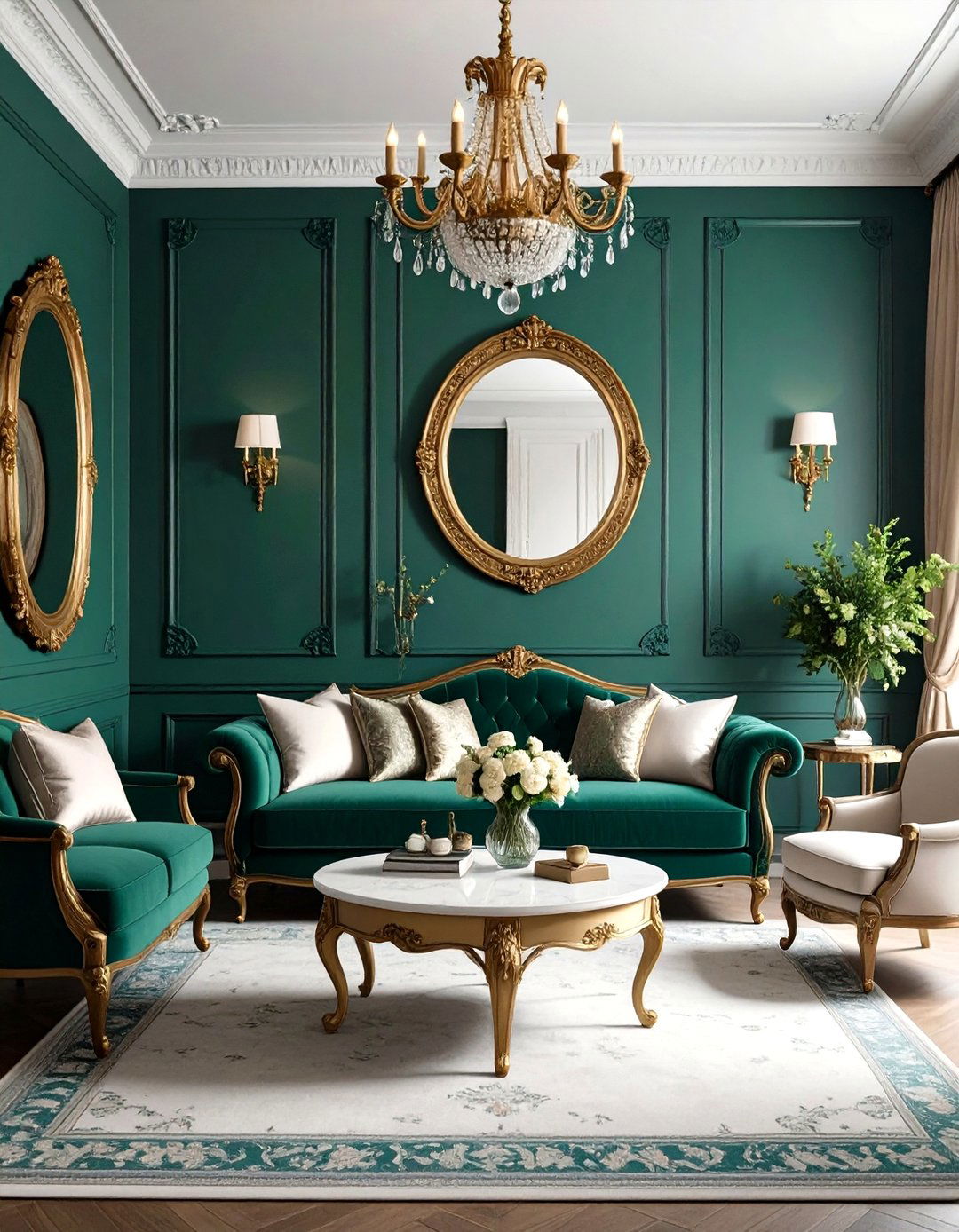
Creating a focal point with a dark green accent wall instantly infuses a Victorian living room with rich character. Opt for a shade like deep emerald or forest green to frame your seating area, then layer in contrasting trim or mouldings painted in a crisp cream or antique white. The result is a striking backdrop that highlights artwork, mirrors, or gilded frames, while adding architectural interest. This single-wall approach allows you to enjoy intense color without overwhelming the space, and complements period details such as wainscoting or cornices. The deep hue also brings warmth and depth, making the room feel simultaneously grand and cozy.
2. Velvet Upholstered Sofa
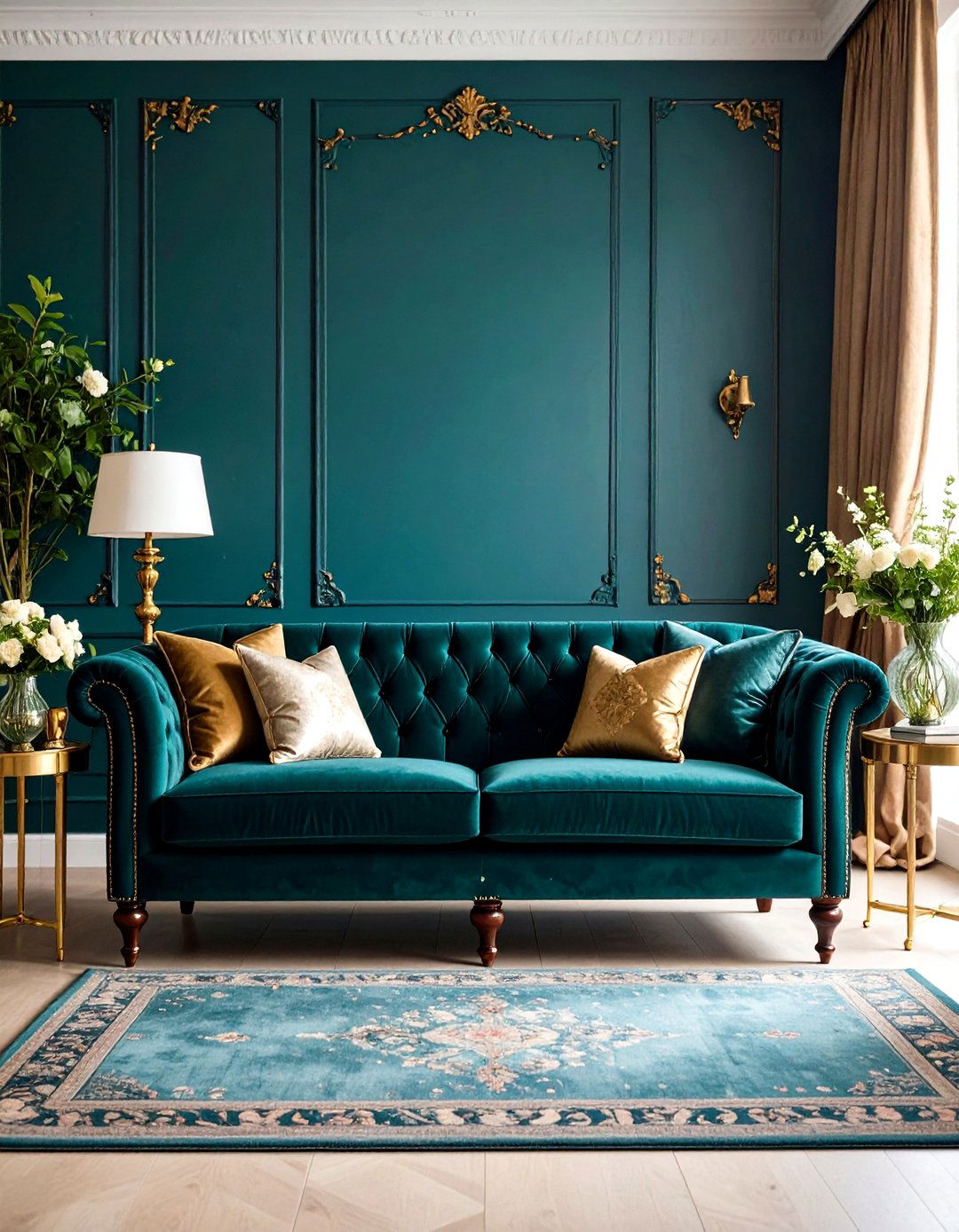
A dark green velvet sofa serves as a sumptuous centerpiece in any Victorian-inspired living room. The plush texture of velvet coupled with a moody green shade creates an inviting spot for relaxation while evoking 19th-century luxury. Choose a sofa with turned wooden legs and button-tufted detailing to emphasize the period aesthetic. Accentuate it with brass or gold side tables and patterned cushions in jewel tones for contrast. Velvet’s natural sheen reflects ambient light, softening the intensity of the green and adding dimension to the room. This statement piece balances comfort with elegance, anchoring the space in historic charm.
3. Ornate Patterned Wallpaper
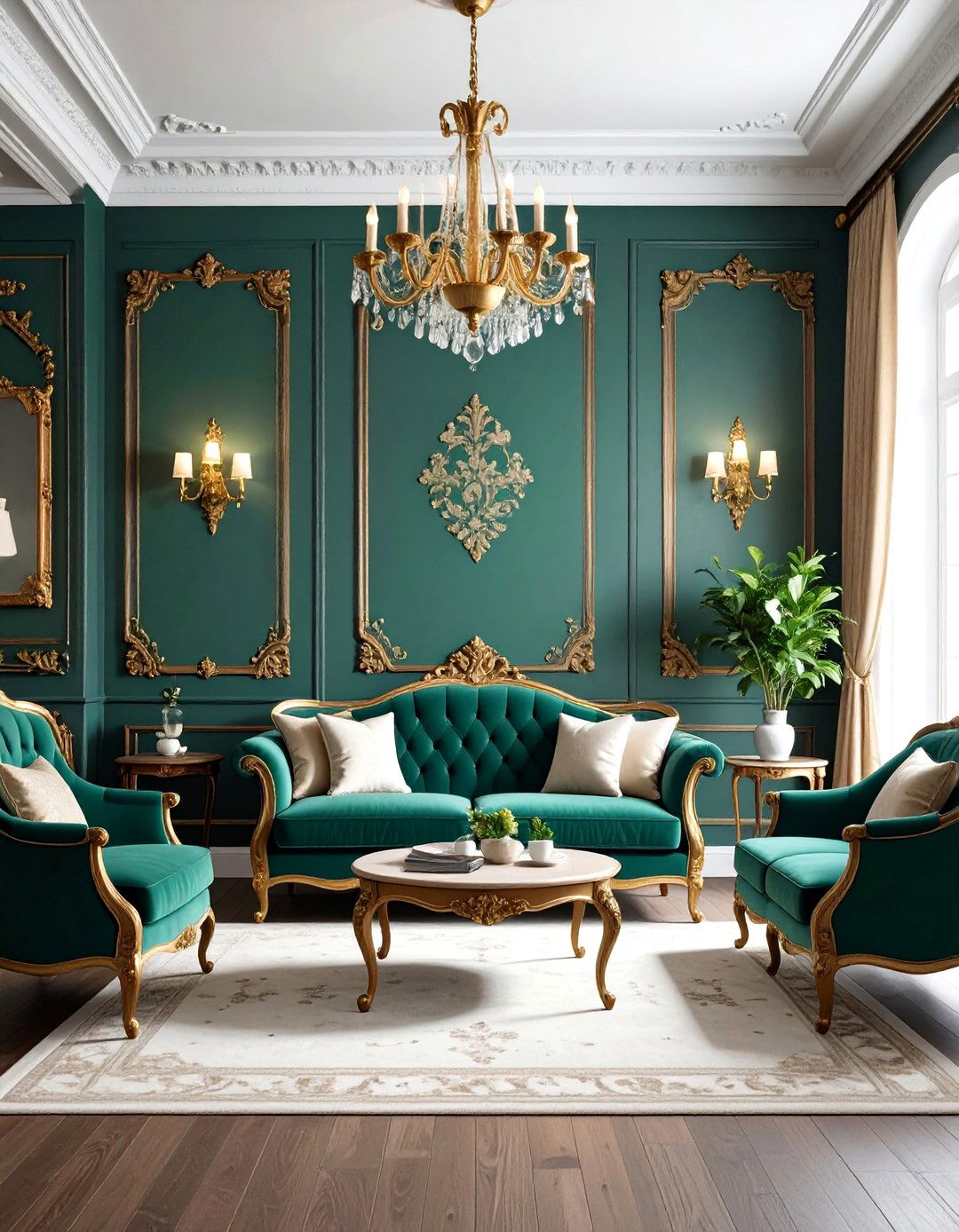
Richly patterned wallpaper in dark green offers a tactile way to embrace Victorian flair. Look for traditional motifs such as damask, floral botanicals, or geometric trellis designs, printed on textured paper. Applying wallpaper on all walls—or as a framed “panel” between mouldings—enhances the historic feel and adds intricate detail. To prevent visual overload, pair the pattern with solid-colored furnishings and minimal accessories. Accentuate the wallpaper’s metallic inks or raised printing with ambient lighting from sconces or chandelier. This approach transforms your walls into art, celebrating Victorian craftsmanship while providing a lush, enveloping ambiance.
4. Antique Wooden Furniture
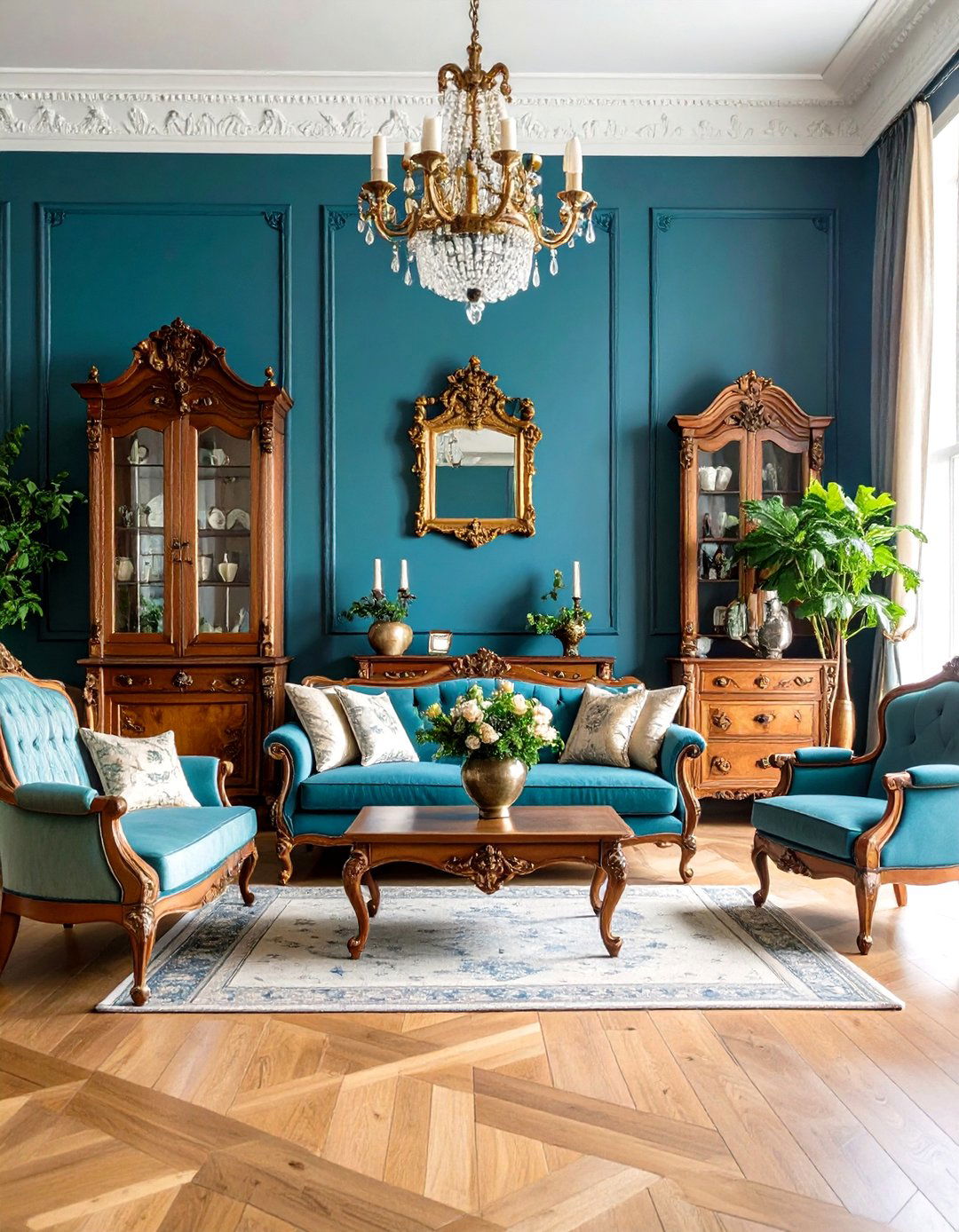
Incorporating antique wooden pieces—such as carved mahogany cabinets, sideboards, or display vitrines—grounds the room in authenticity. Dark green walls beautifully offset warm wood tones, creating a rich visual interplay. Seek out pieces with intricate detailing: turned spindles, fluted pilasters, or inlaid veneers. Display collections of porcelain, leather-bound books, or brass candlesticks within these cabinets to layer in texture. Antique furniture not only adds functional storage but also tells a story, connecting modern living with Victorian history. Its patina and craftsmanship bring depth and character, ensuring your living room feels curated and timeless.
5. Rich Textured Fabrics
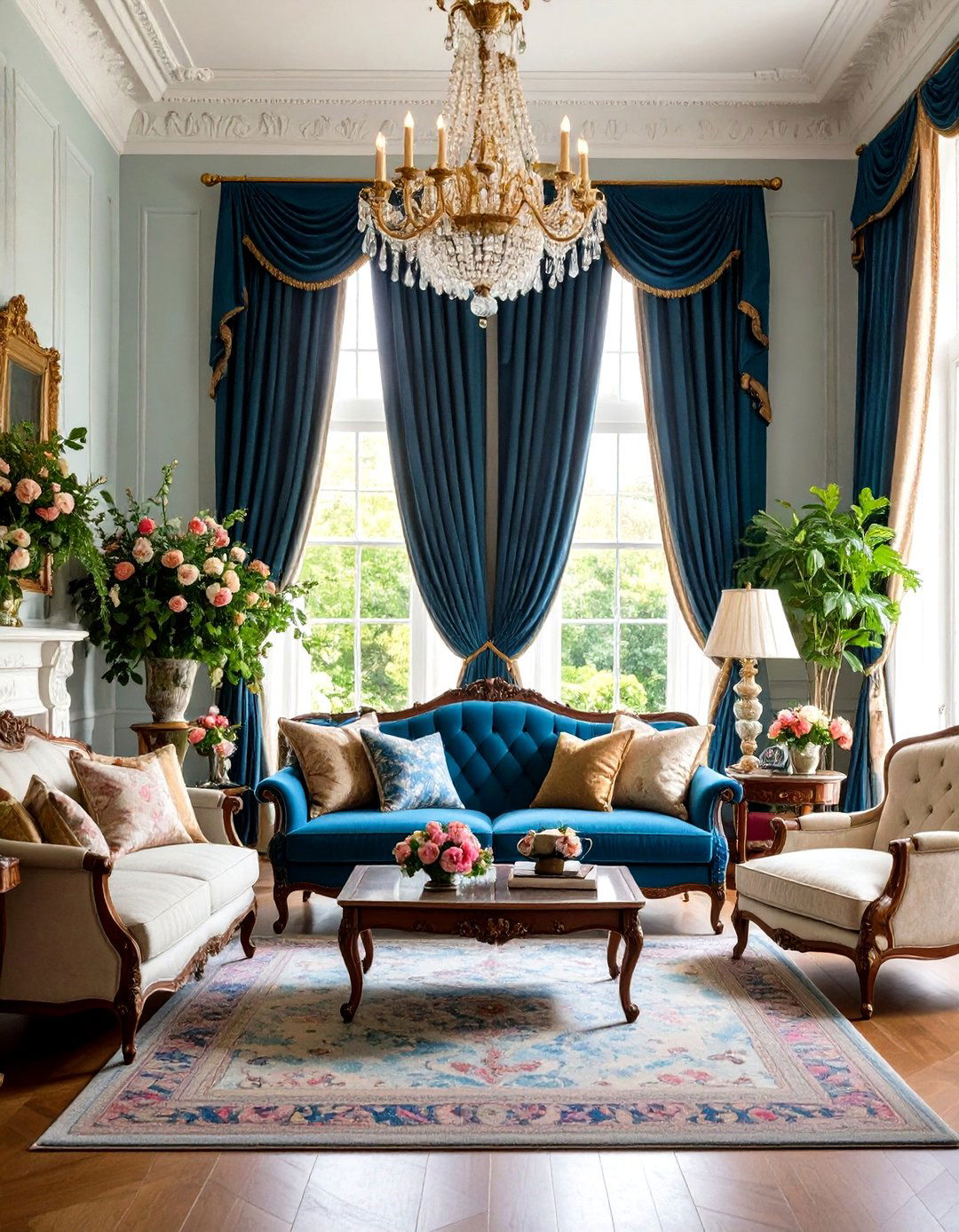
Layering textiles with varied textures enhances the sensory richness of a dark green Victorian space. Think velvet draperies, silk throw pillows, and wool plaids in complementary jewel tones—ruby reds, sapphire blues, and mustard yellows. Introduce tapestry or brocade fabrics on accent chairs or footstools to echo period upholstery styles. A heavy fabric palette not only reinforces a sense of warmth and luxury but also softens acoustics, making the room cozy for conversation. By mixing textures rather than patterns, you maintain visual cohesion while celebrating the tactile opulence characteristic of Victorian interiors.
6. Stained Glass Windows
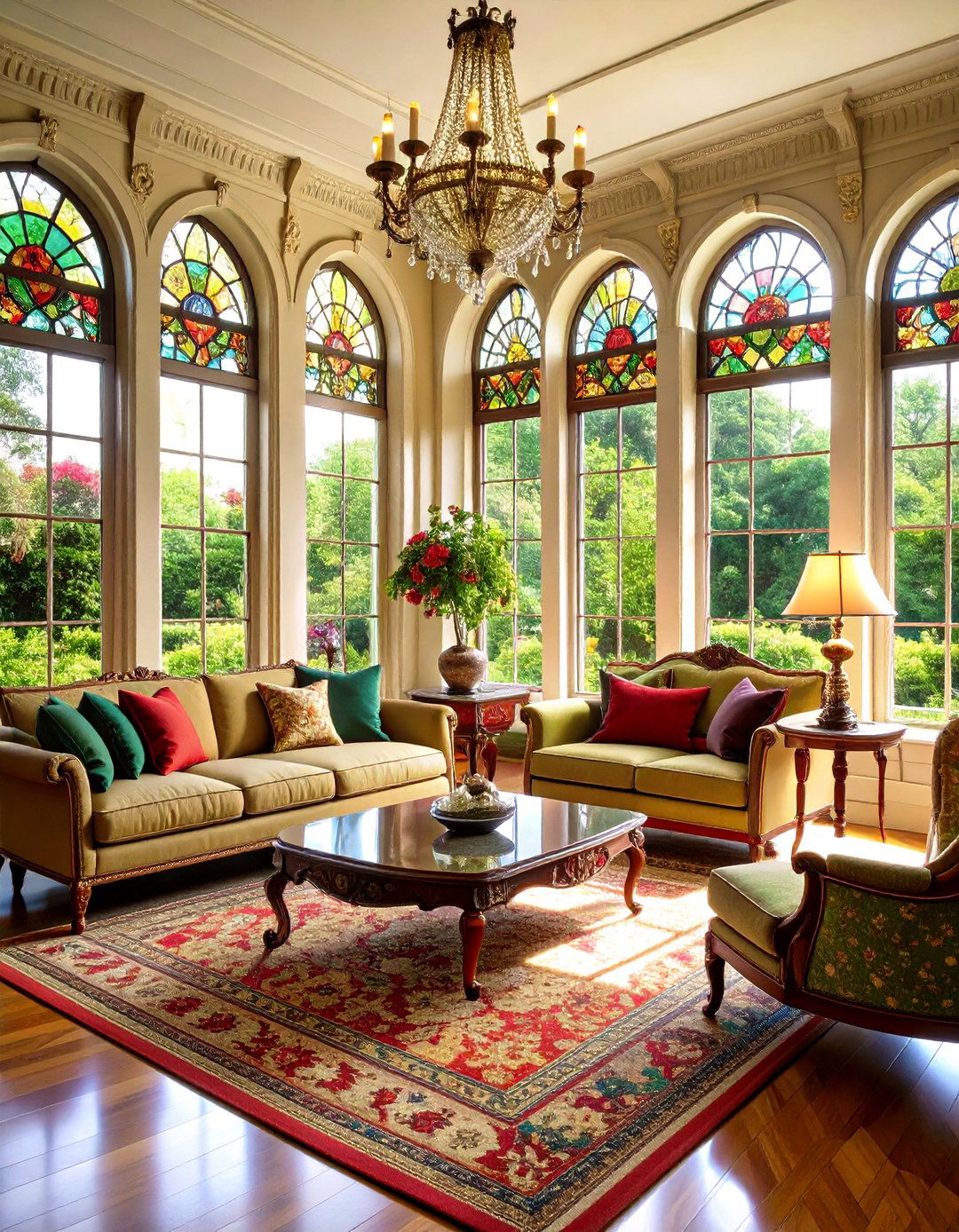
Installing or highlighting stained glass windows infuses a living room with colorful Victorian artistry. Choose designs featuring floral motifs, heraldic emblems, or geometric panes in shades of green, amber, and ruby. Sunlight streaming through these windows casts jewel-toned patterns across dark green walls, animating the space with shifting light. If original stained glass isn’t available, consider installing transom panels or decorative window films that mimic the effect. This element not only honors historic design but also becomes a living artwork, changing throughout the day and adding an enchanting, timeless quality to the room.
7. Gilded Mirrors and Frames
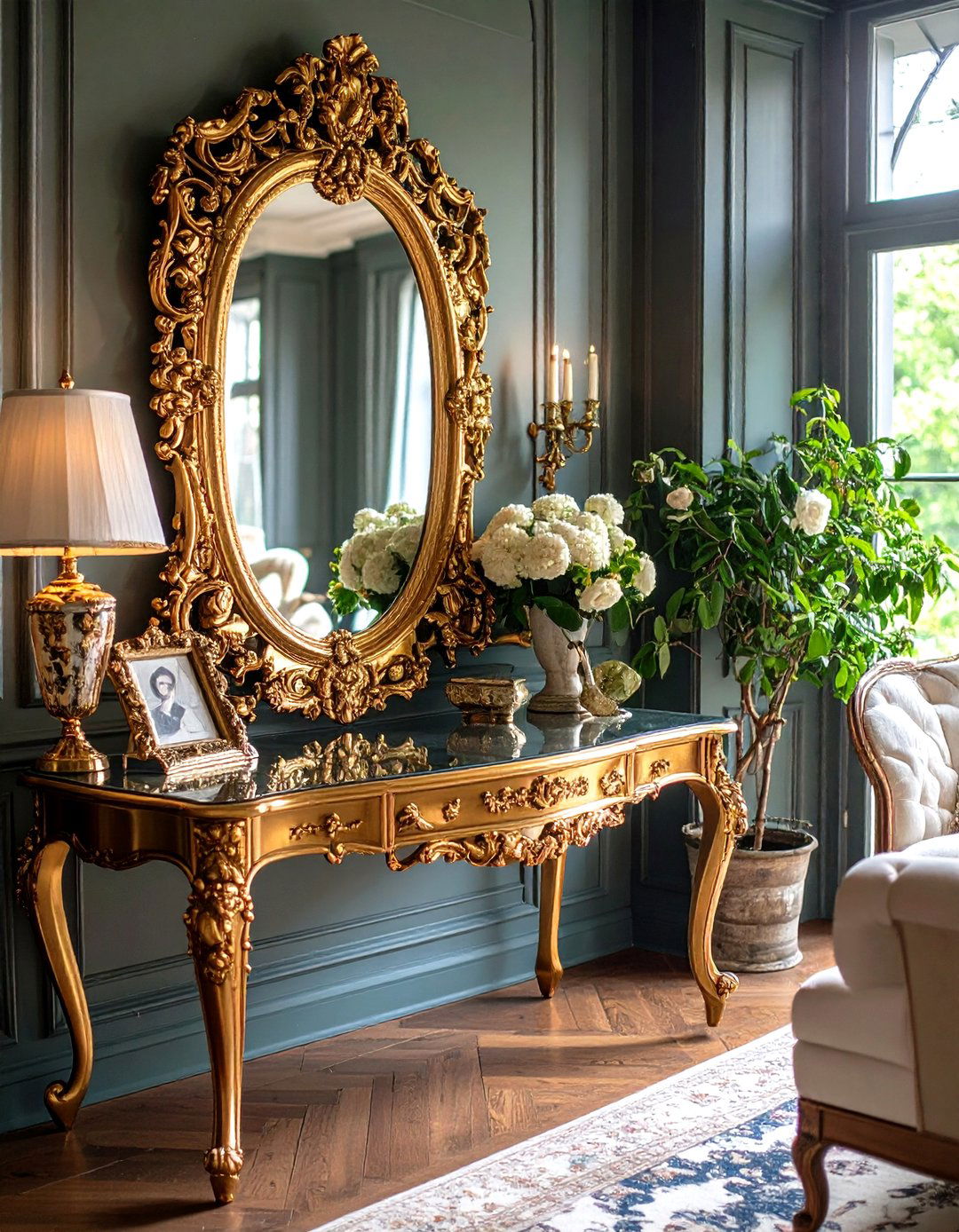
Reflective surfaces in gilded frames amplify light and add opulence to deep green interiors. Large, ornately carved mirrors can be placed above mantels or sofas to broaden perceived space and bounce ambient glow. Similarly, framed period prints or portraits in gold-leaf frames create curated gallery walls that pop against dark backgrounds. The metallic sheen contrasts with matte wall hues, drawing the eye and elevating décor. By choosing frames with Victorian motifs—such as shell scrolls or acanthus leaves—you ensure every reflective piece contributes to an overall sense of historic richness.
8. Patterned Rugs

Underfoot, a boldly patterned rug anchors seating areas and introduces additional color layers. Opt for Persian or Aubusson rugs featuring green accents, intricate medallions, and border florals. Their complex patterns complement wallpaper and upholstery without feeling repetitive. A rug in deep burgundy, gold, and forest green ties in furniture legs and wood floors, while providing a plush surface that temper cold drafts. This classic flooring choice also defines conversation zones in open-plan layouts, ensuring each area feels intimate and connected to the Victorian dark green palette.
9. Chandeliers and Sconces
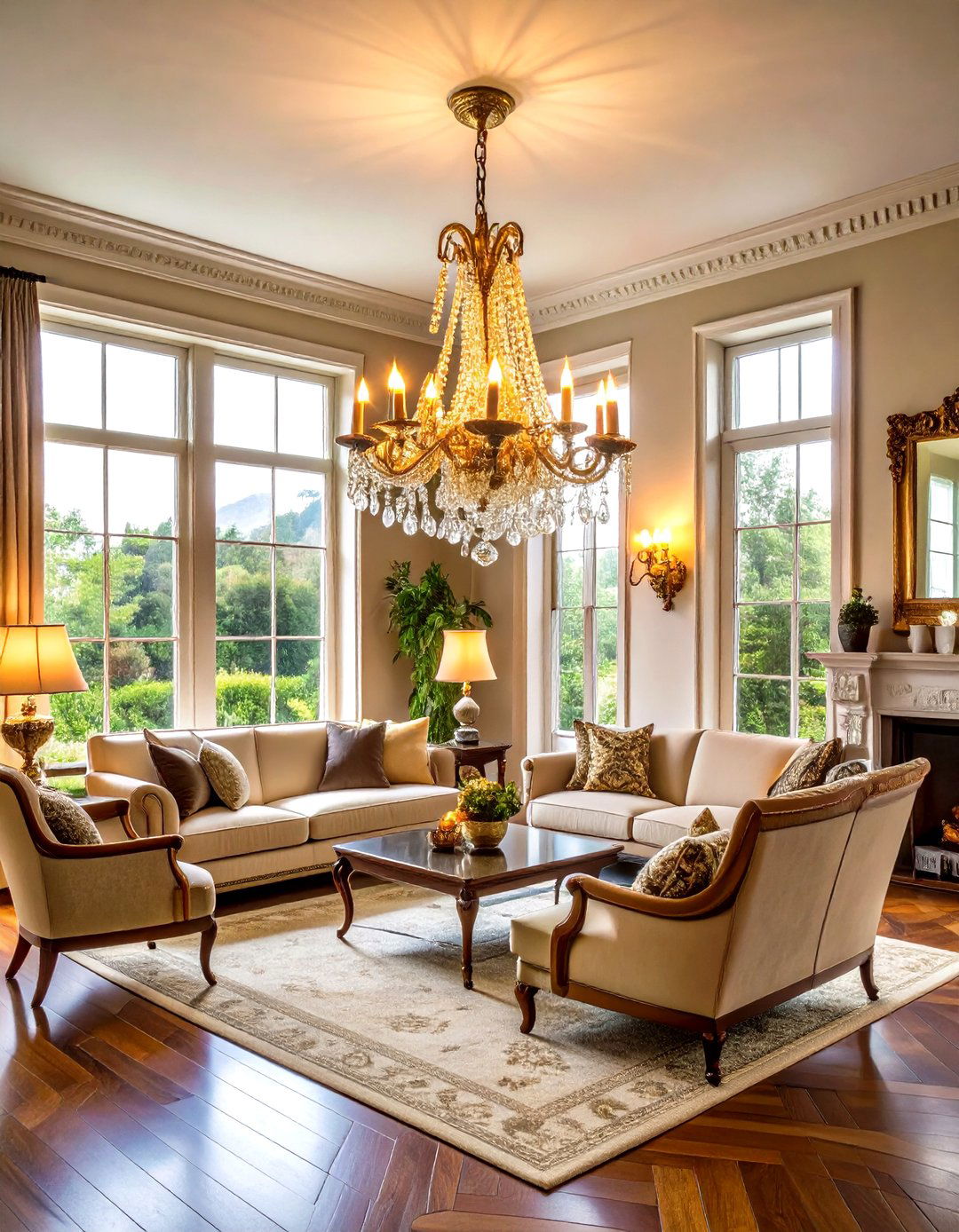
Victorian lighting fixtures—crystal chandeliers, brass or wrought-iron wall sconces—add drama and authenticity. Position a central chandelier with teardrop prisms or candle-style bulbs to cast sparkling reflections on walls and ceilings. Complement it with matching sconces flanking mirrors or paintings, creating layered illumination. Warm-toned bulbs accentuate the richness of dark green paint, while dimmers allow mood adjustment. These fixtures serve both practical and decorative roles, combining craftsmanship and functionality, key tenets of Victorian design.
10. Intricate Mouldings and Wainscoting
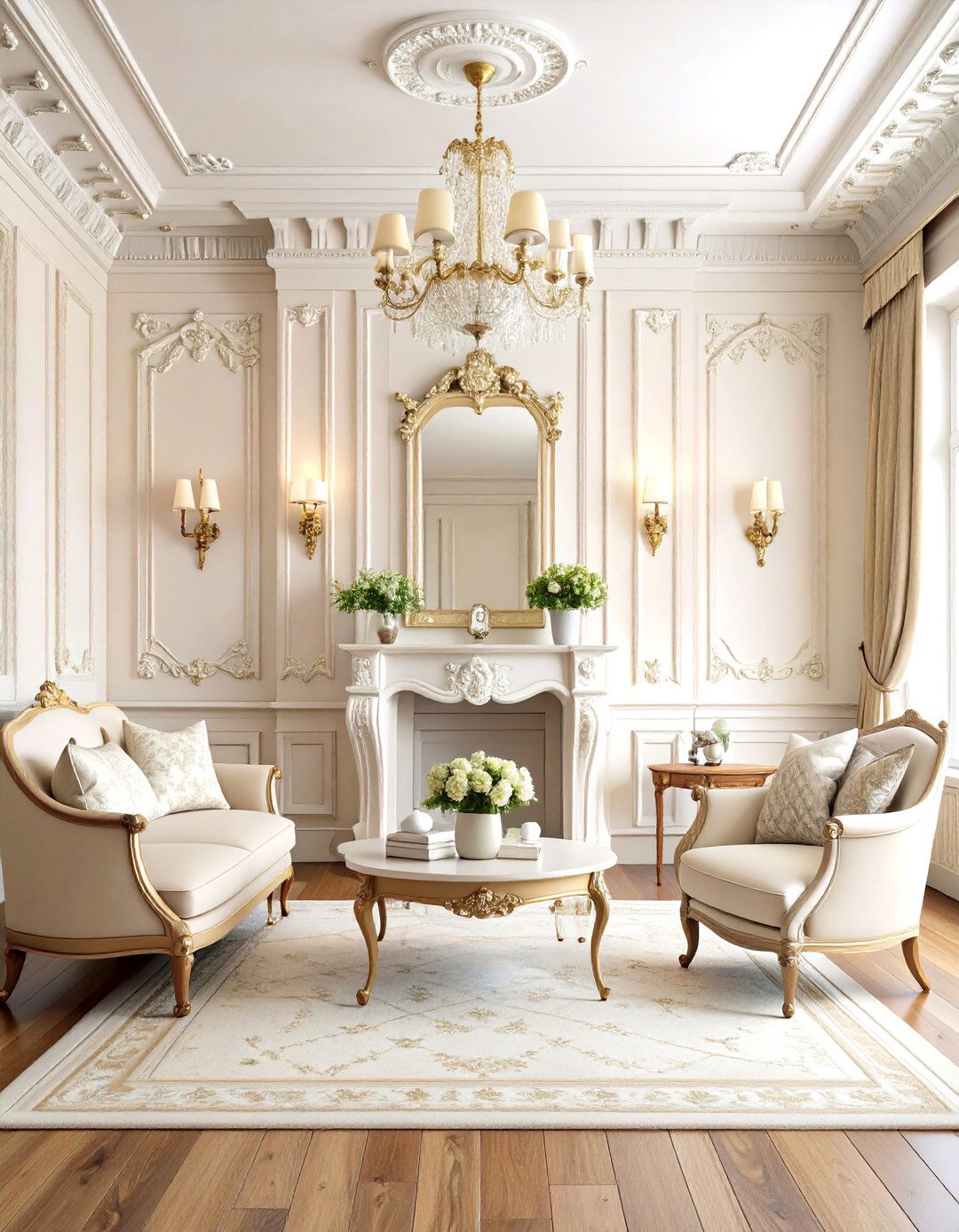
Detailed woodwork—crown mouldings, picture rails, and wainscoting—reinforces a Victorian aesthetic when painted in contrasting creams or highlighted in natural wood. On dark green walls, crisp white cornices and dado rails frame the space, creating structured panels that add architectural interest. These elements also provide opportunities for two-tone painting, such as pairing green walls with off-white ceiling and trim, ensuring the room feels cohesive yet layered. The craftsmanship of mouldings pays homage to period construction methods, elevating the overall décor quality.
11. Velvet Draperies
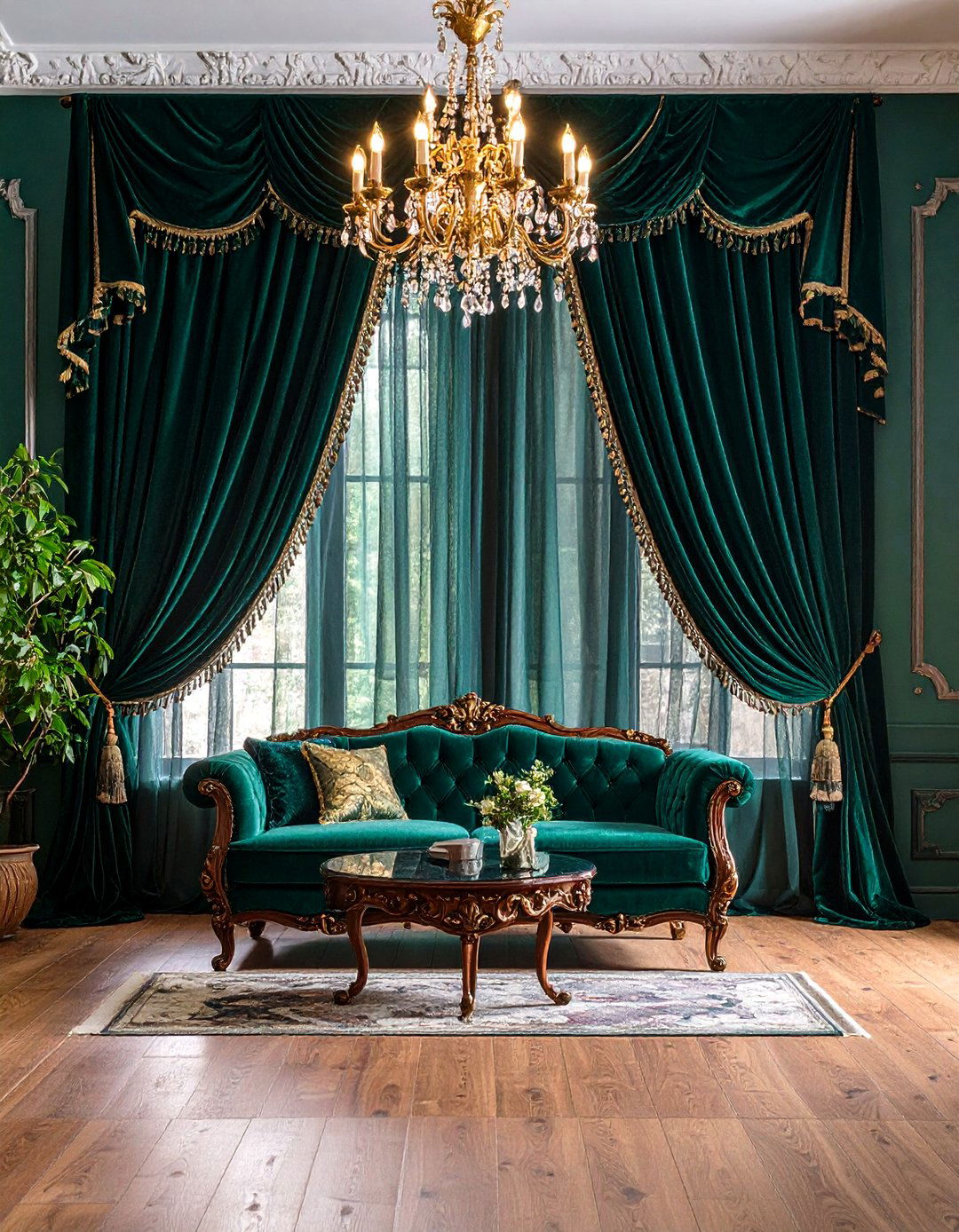
Floor-to-ceiling velvet drapes in dark green enhance both insulation and grandeur. Choose heavy, lined panels hung from ornate rods with tassel tiebacks to evoke old-world luxury. The thick fabric absorbs sound and imparts a cocooning feel, while the length visually elongates walls, making high ceilings appear even taller. Pair drapes with sheers in lighter fabrics to control light levels and privacy. This combination of functionality and form reflects Victorian priorities of comfort and elegance.
12. Marble Fireplace Surround
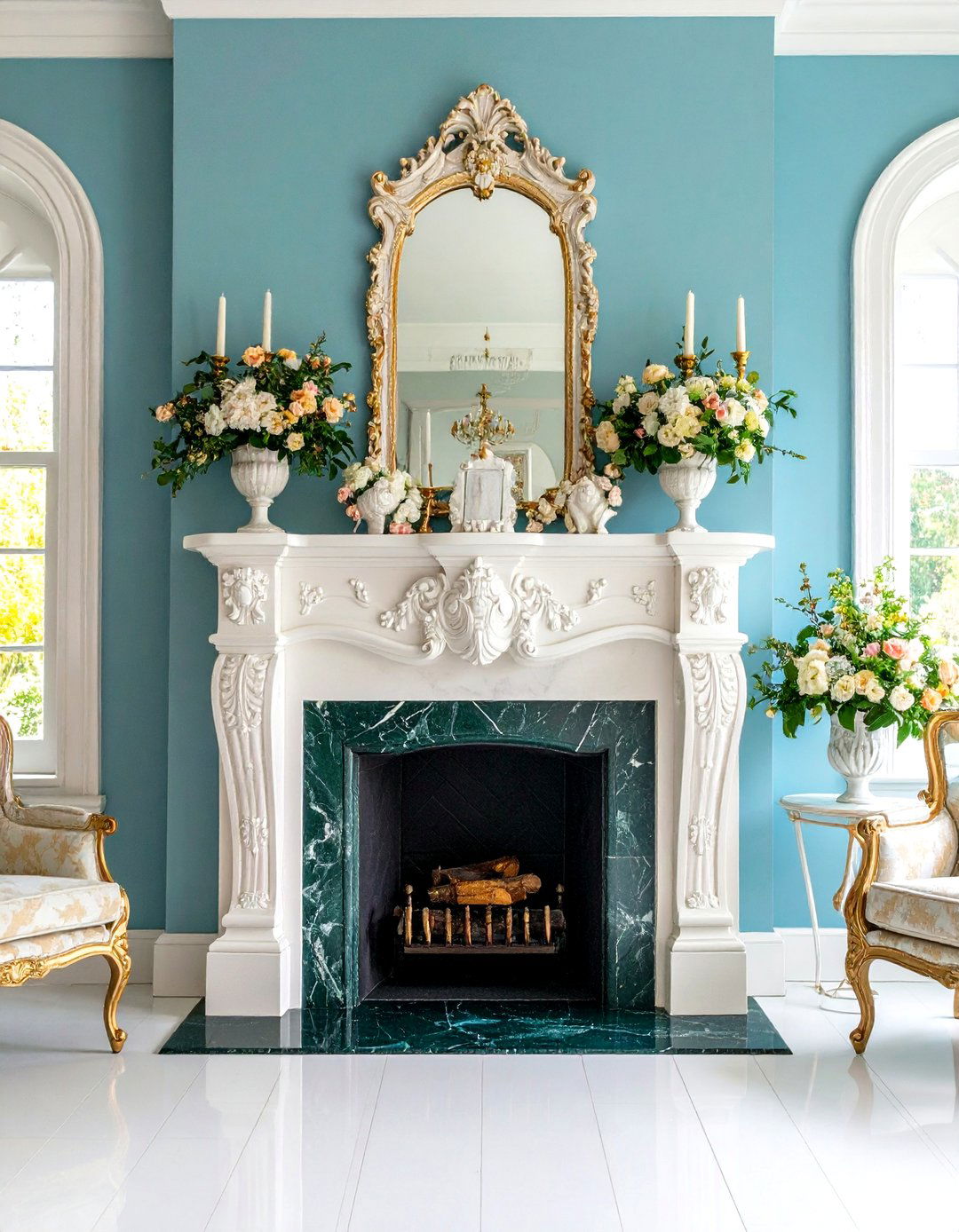
A marble fireplace with dark green accents—such as veins of verdant hues—anchors the room as a focal point. Victorian-era mantels often featured carved marble with ornate pilasters and shelf mouldings. Surround the hearth with matching dark green tiles or hearth rug to echo wall color and reinforce palette continuity. The cool stone contrasts warmly lit interiors, while offering a luxurious textural element. Seasonal décor on the mantle—candlesticks, potted ferns, or antique clocks—enhances the historic ambience.
13. Brass Accents

Brass hardware—doorknobs, curtain rods, light switch plates—and decorative accessories bring a warm metallic glow against dark green. Over time, brass develops a patina that complements vintage furnishings. Incorporate brass-framed lamps, vases, or trays to introduce reflective touches and tie together other gold elements. The combination of green and brass echoes Victorian fascination with naturalistic metals and serves as a unifying metallic thread throughout various décor components.
14. Damask Upholstery
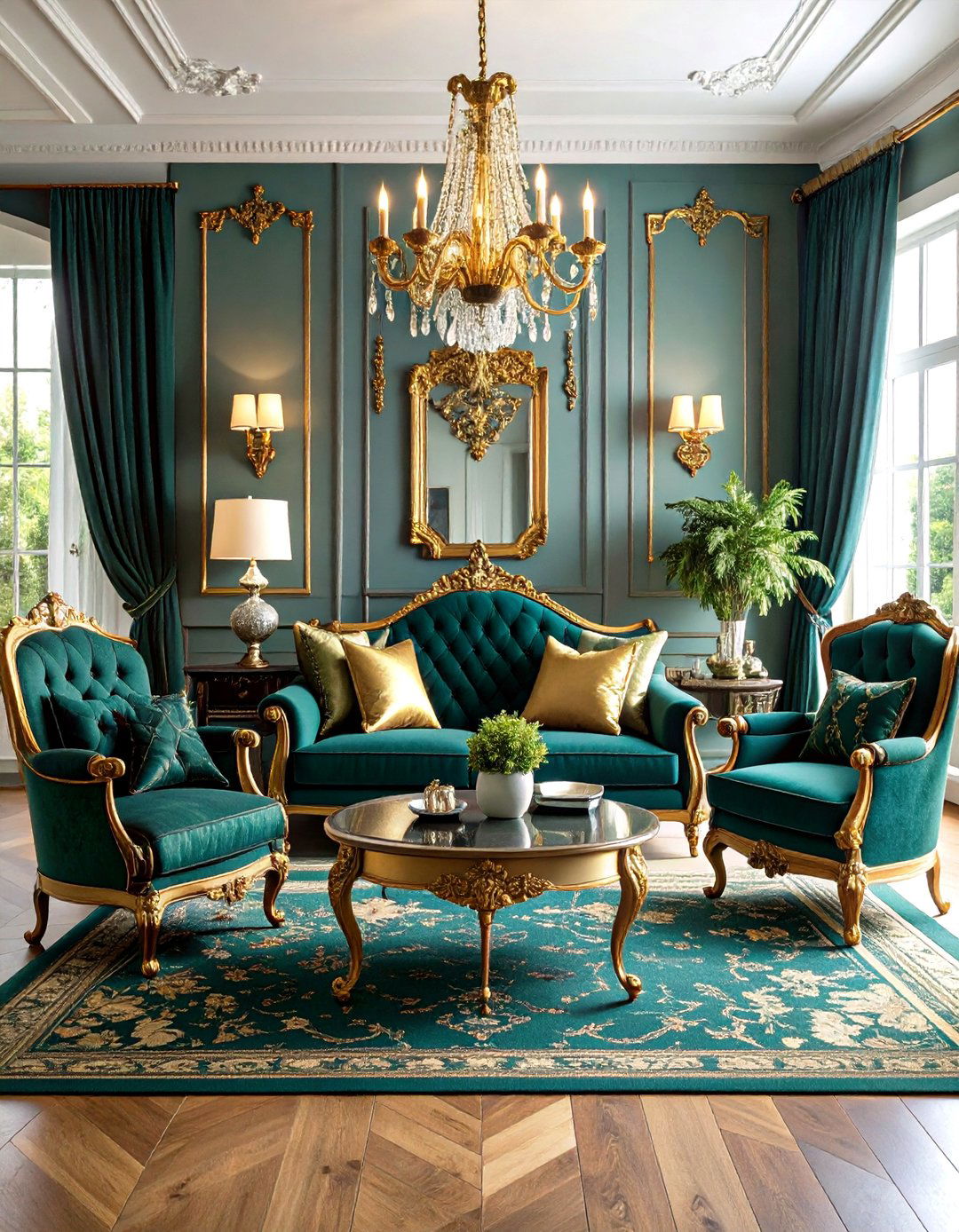
Damask-patterned fabrics in dark green and gold offer a classic upholstery choice for chairs or lumbar cushions. The reversible weave creates subtle sheen differences, adding dimensionality in changing light. Use damask on occasional chairs or as accent pillows to complement solid velvets and avoid overwhelming the eye. This refined textile pays direct homage to Victorian fabric arts while ensuring modern comfort through durable blends.
15. Persian Carpets
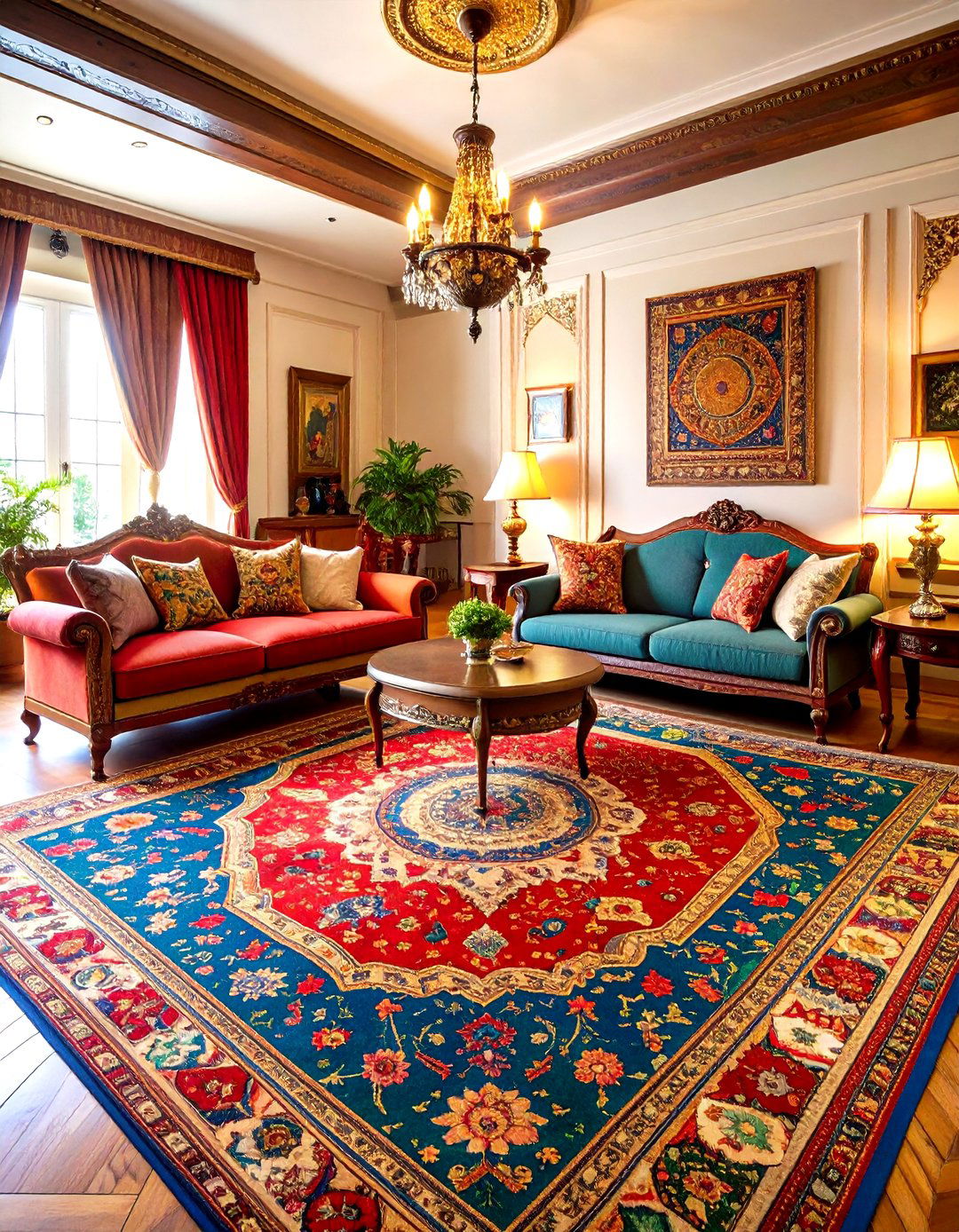
Hand-knotted Persian carpets introduce an heirloom quality and time-honored craftsmanship. Choose carpets with central medallions and rich green fields, framed by intricate borders in complementary hues. The warmth and softness underfoot balance cool wood or stone floors, while the detailed patterns harmonize with other textiles and wallpapers. A Persian carpet not only grounds the furniture layout but also connects the space to global Victorian trade influences, showcasing luxurious imports of the era.
16. Floral Porcelain Décor

Display delicate porcelain pieces—vases, figurines, plates—with hand-painted florals and green accents. Victorian salons often featured porcelain in cabinets or on mantel shelves, reflecting a fascination with botanical illustration. Group items of varying heights on trays or tiered stands to create visual interest. The interplay of glossy ceramics against matte green walls conveys refinement and celebrates period collecting practices.
17. Carved Wood Cabinets
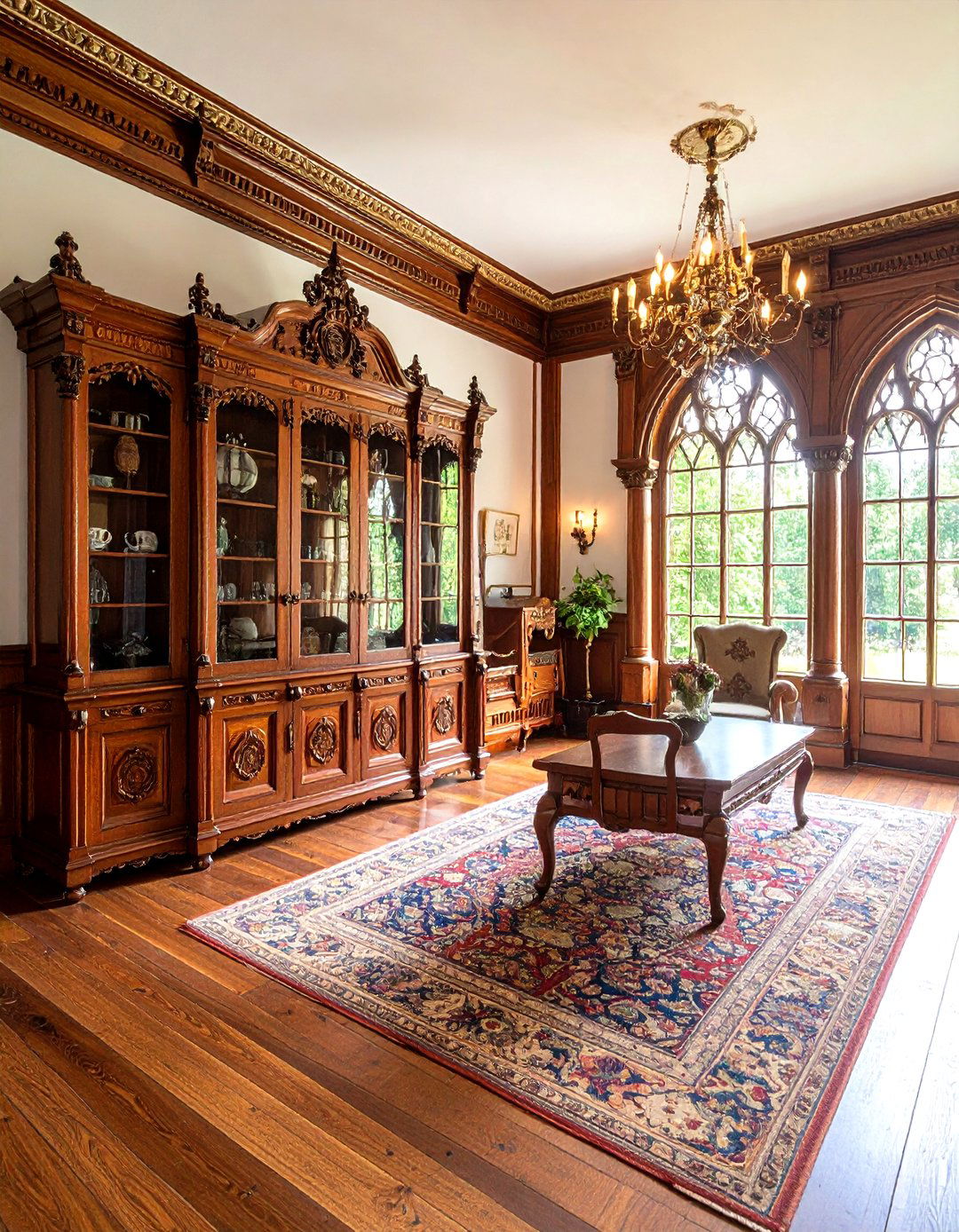
A carved oak or walnut cabinet with glass doors provides storage and display for books, ceramics, or curios. The dark green backdrop inside the cabinet highlights objects while tying into room palette. Look for cabinets with gothic arches, turned columns, or pierced fretwork to reinforce Victorian stylistic elements. These pieces add both utility and sculptural artistry to the living room.
18. Layered Lighting
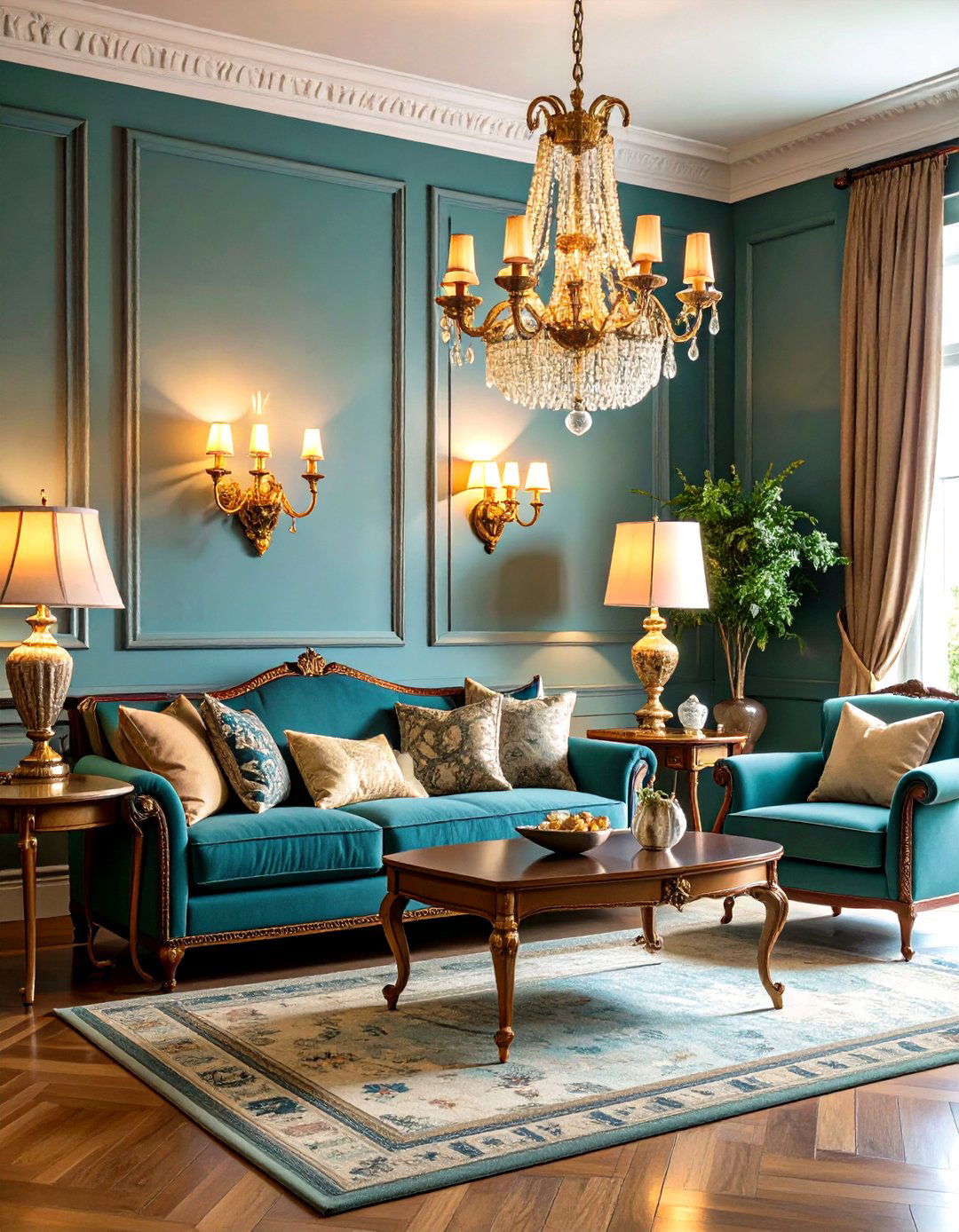
Combine overhead chandeliers with table lamps, floor lamps, and wall sconces to achieve a layered lighting scheme. Use warm, low-wattage bulbs to accent textures and colors without glare. Lamps with fringed or pleated shades evoke Victorian lamp styles, while modern dimmers allow adjustable ambiance. Strategic uplighting on mouldings and artwork reveals architectural details against the dark green walls.
19. Upholstered Armchairs
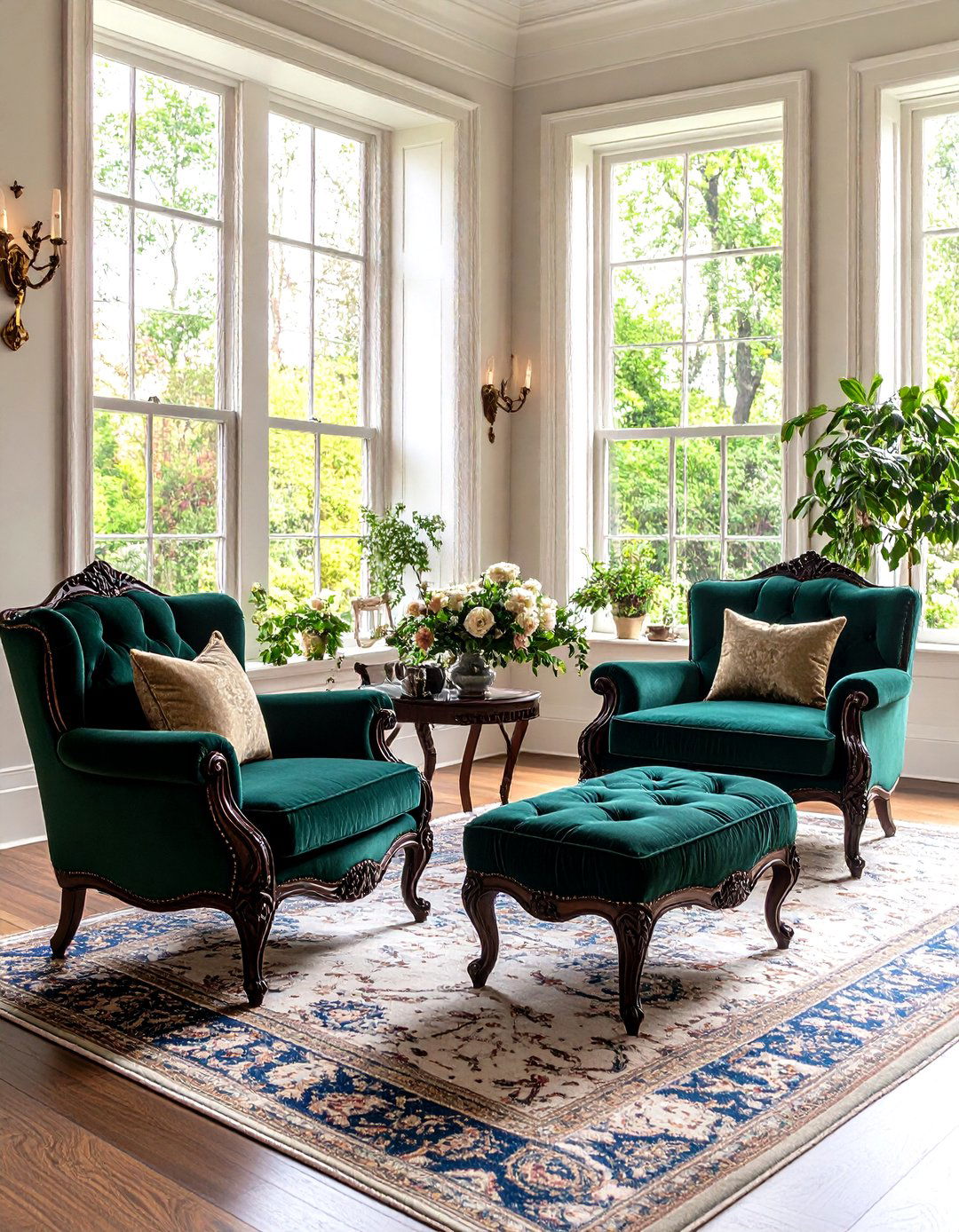
Pair a dark green upholstered armchair with a small side table for cozy reading nooks. Choose club chairs with rolled arms or slipper chairs with carved legs to complement sofas and reinforce period consistency. Accent with a velvet footstool or ottoman in a contrasting jewel tone. Arrange chairs near windows or the fireplace to create intimate seating areas within larger living rooms.
20. Mosaic Tile Flooring
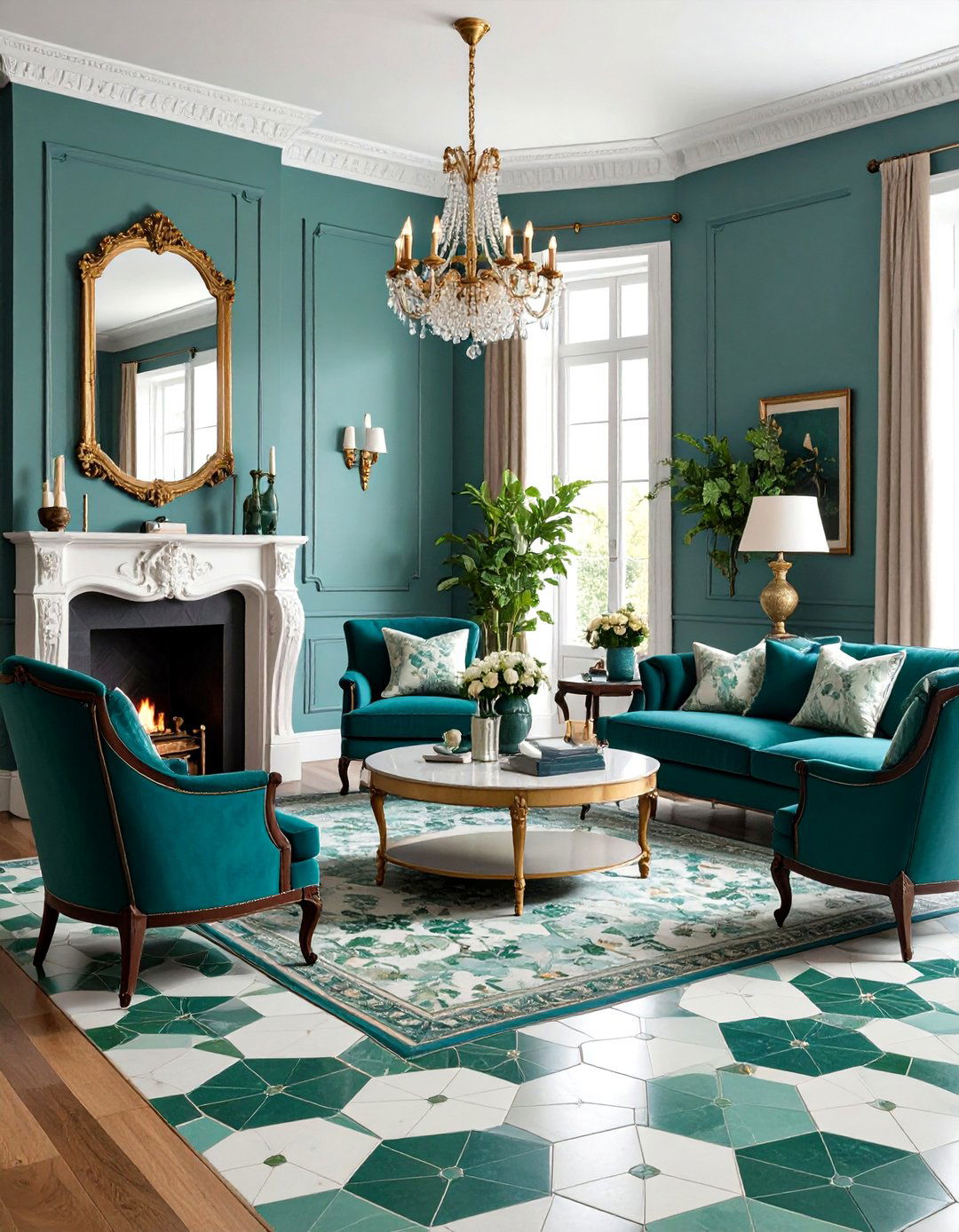
Incorporate mosaic tile designs—Victorian hexagons or encaustic tiles with green motifs—around entryways or hearth floors. The geometric patterns and colors add visual interest underfoot and echo other green elements in the room. Mosaic borders can frame carpets or define transitions between spaces, marrying historic flooring techniques with contemporary installation methods.
Conclusion:
Embracing Victorian dark green living room design is a journey through texture, color, and craftsmanship. From accent walls and sumptuous velvets to antique furniture and layered lighting, each idea contributes to a space that feels both historically rich and warmly lived-in. By thoughtfully combining textiles, patterns, and period details, you can create an elegant retreat that honors the past while providing modern comfort.


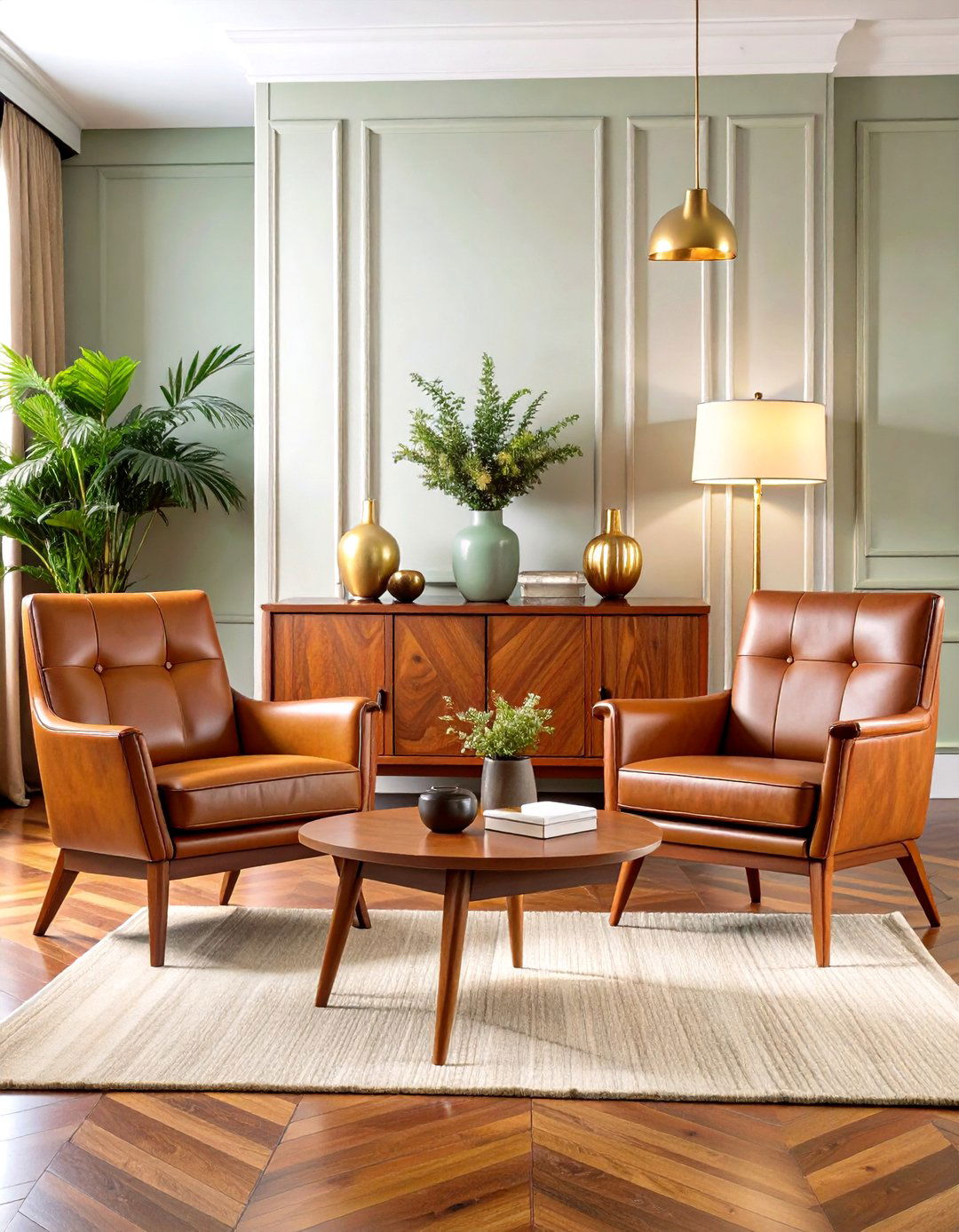
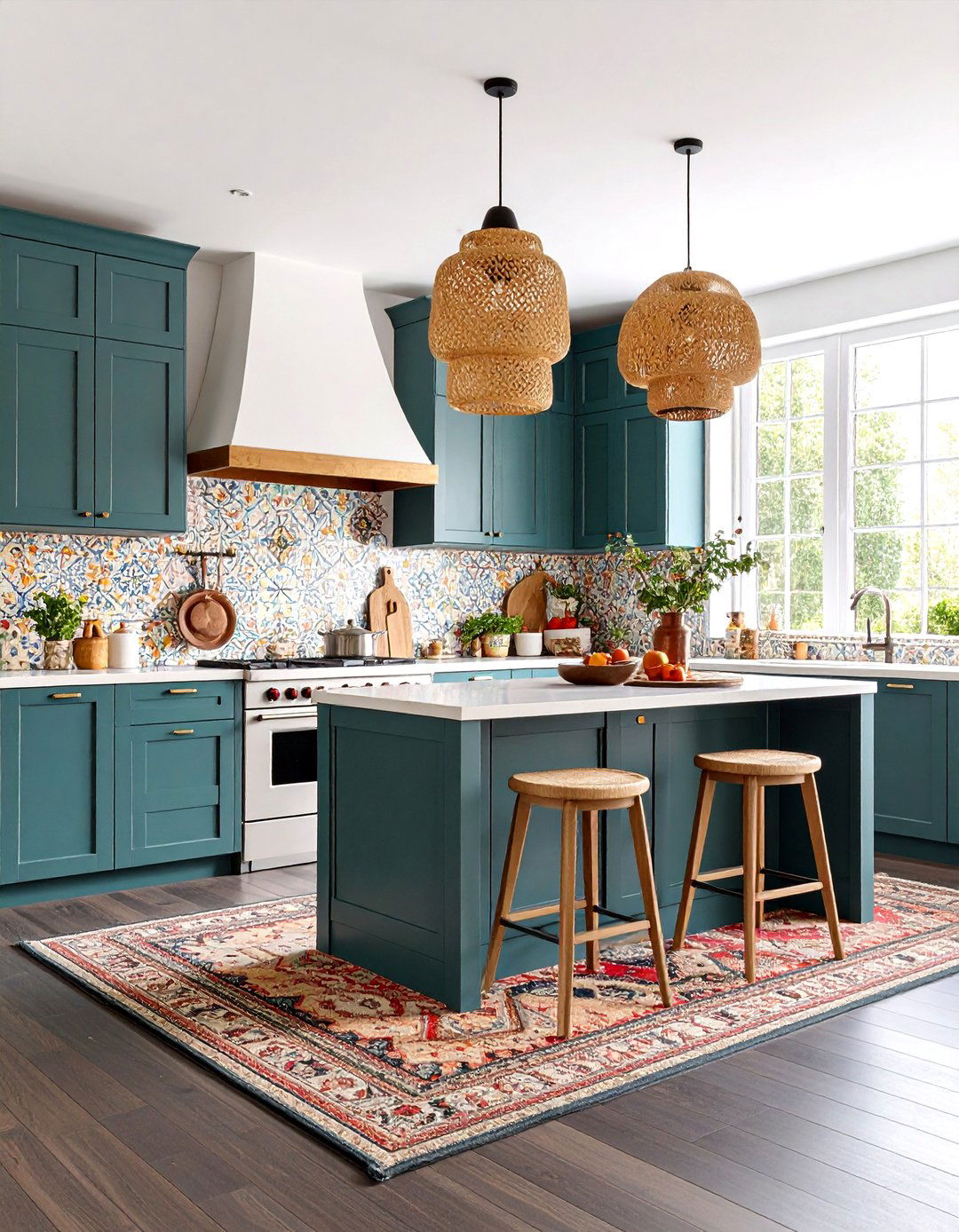

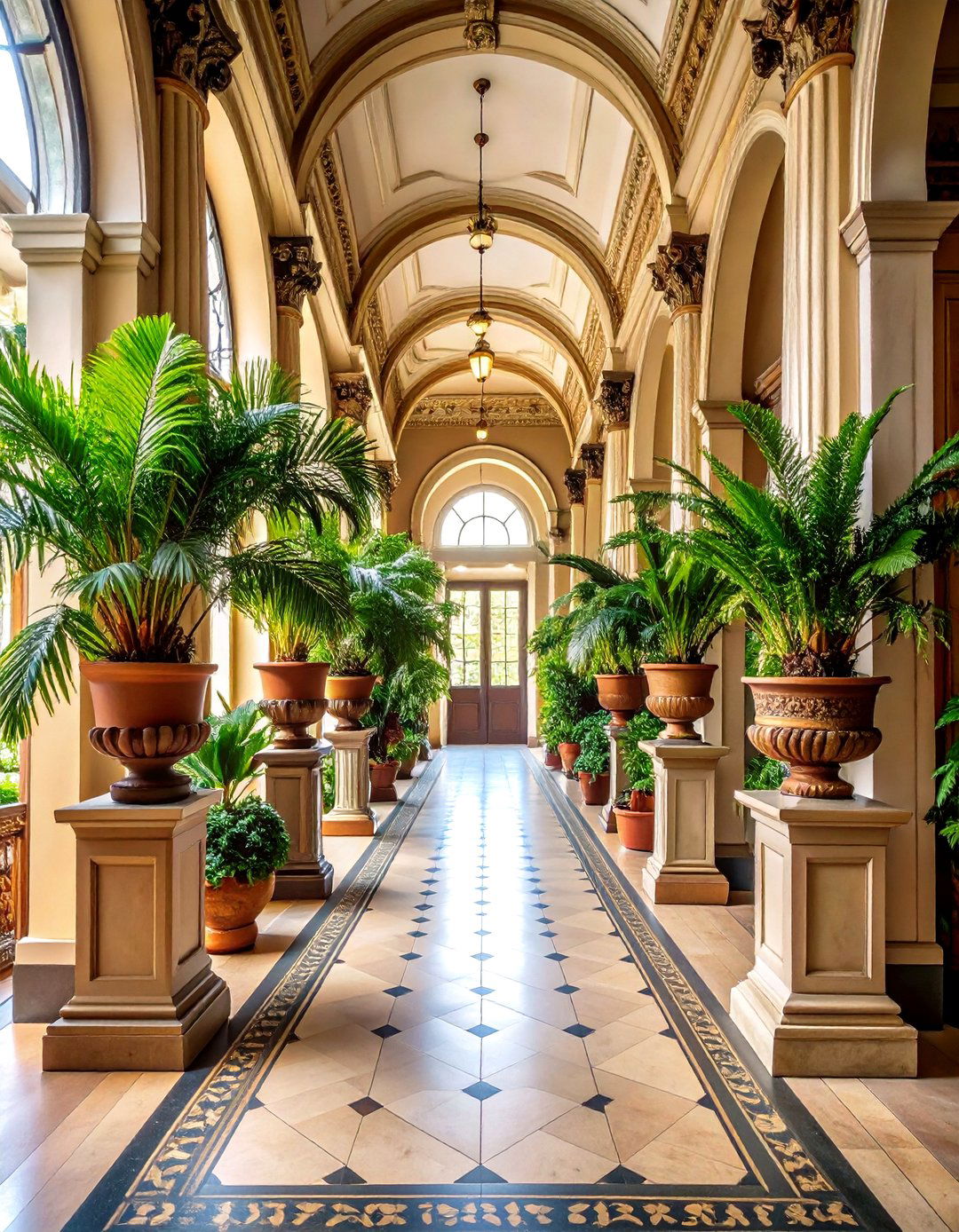
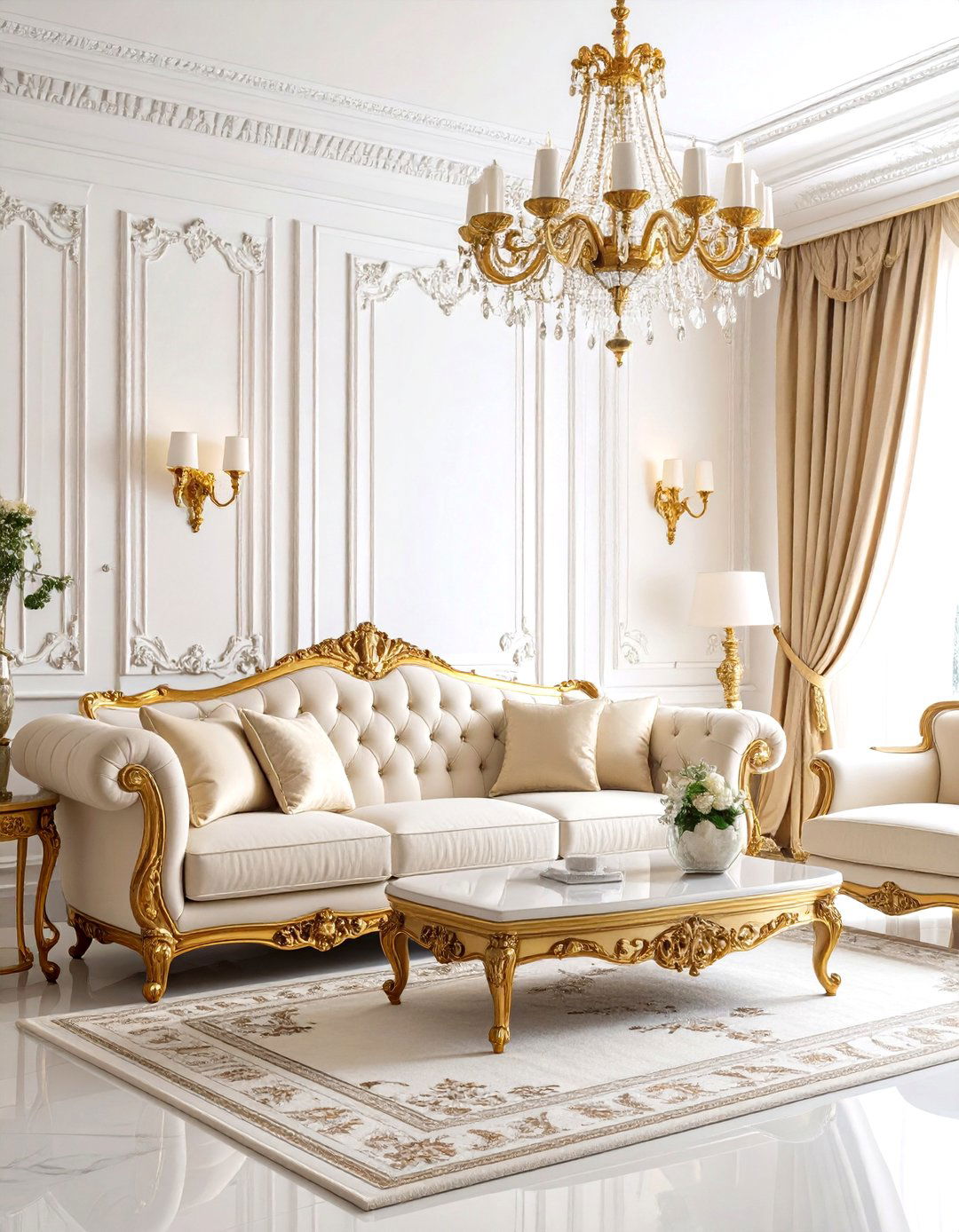
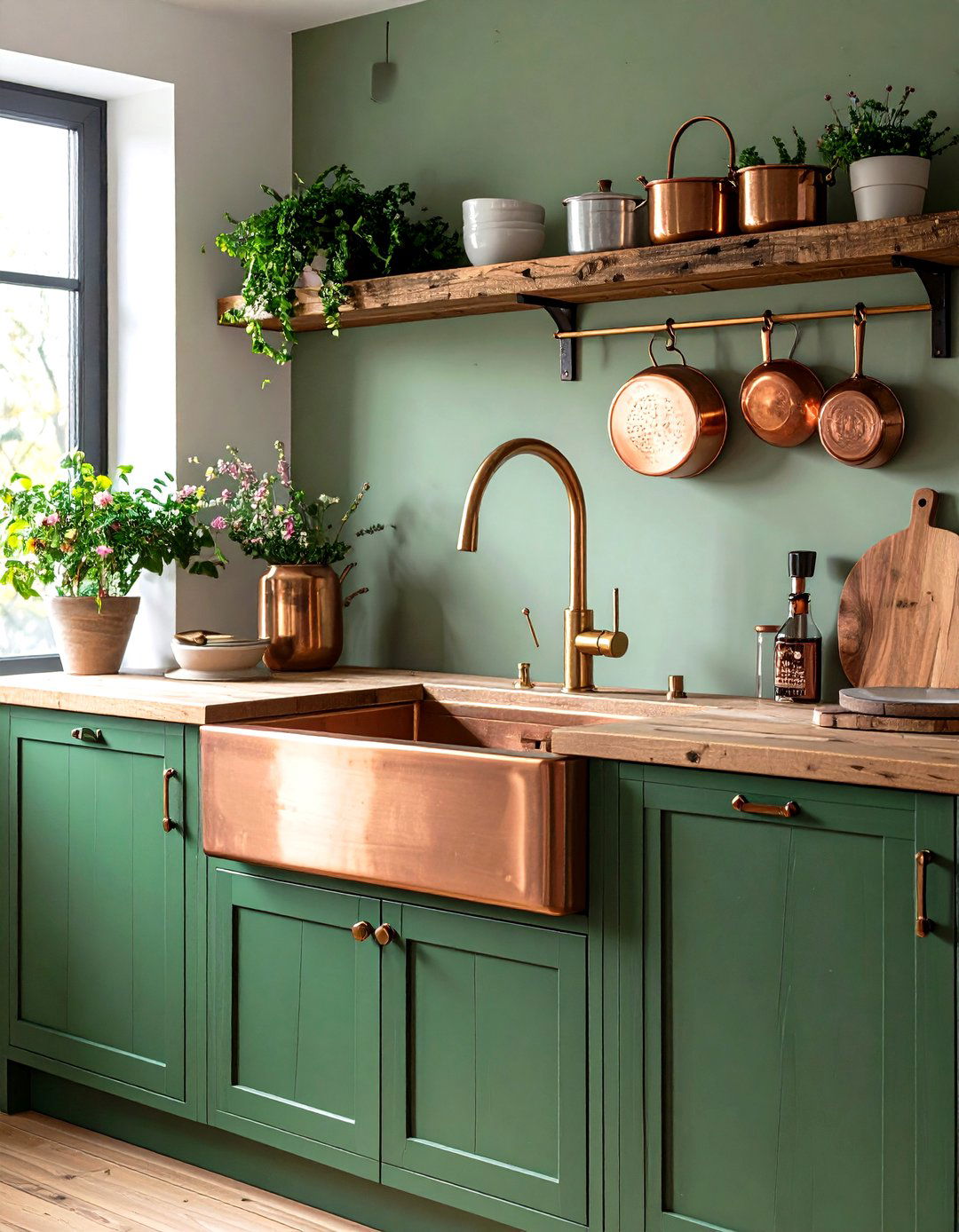
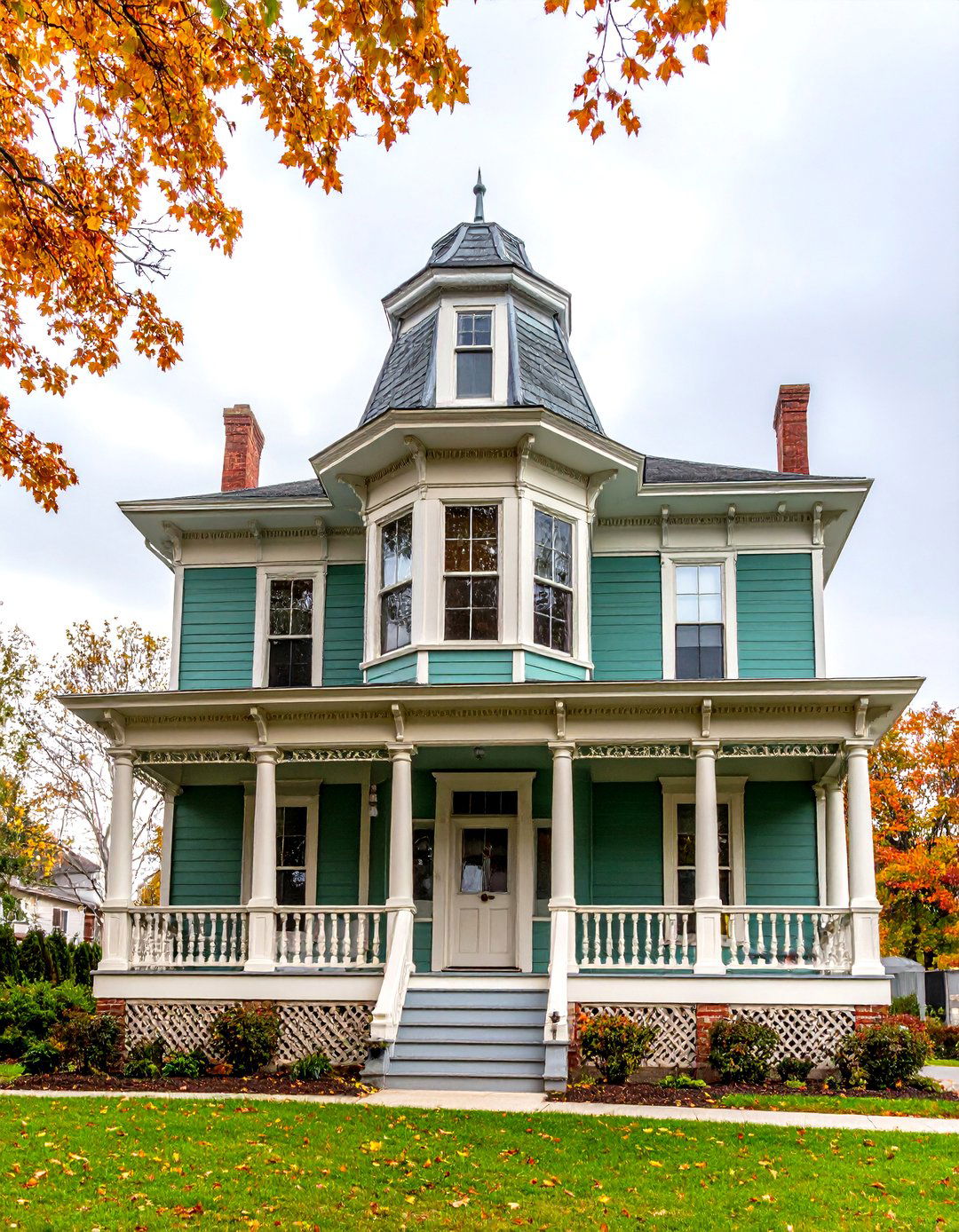
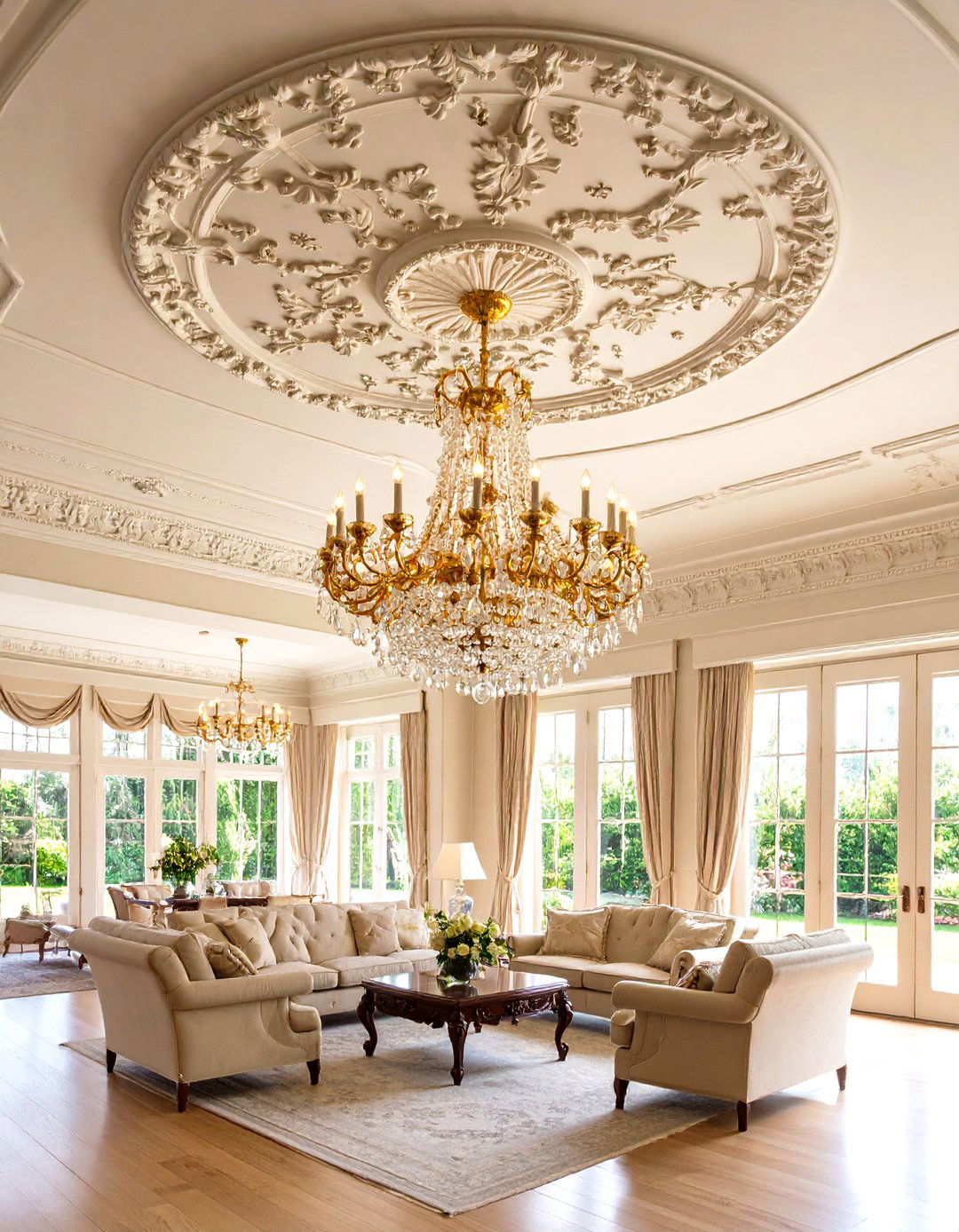
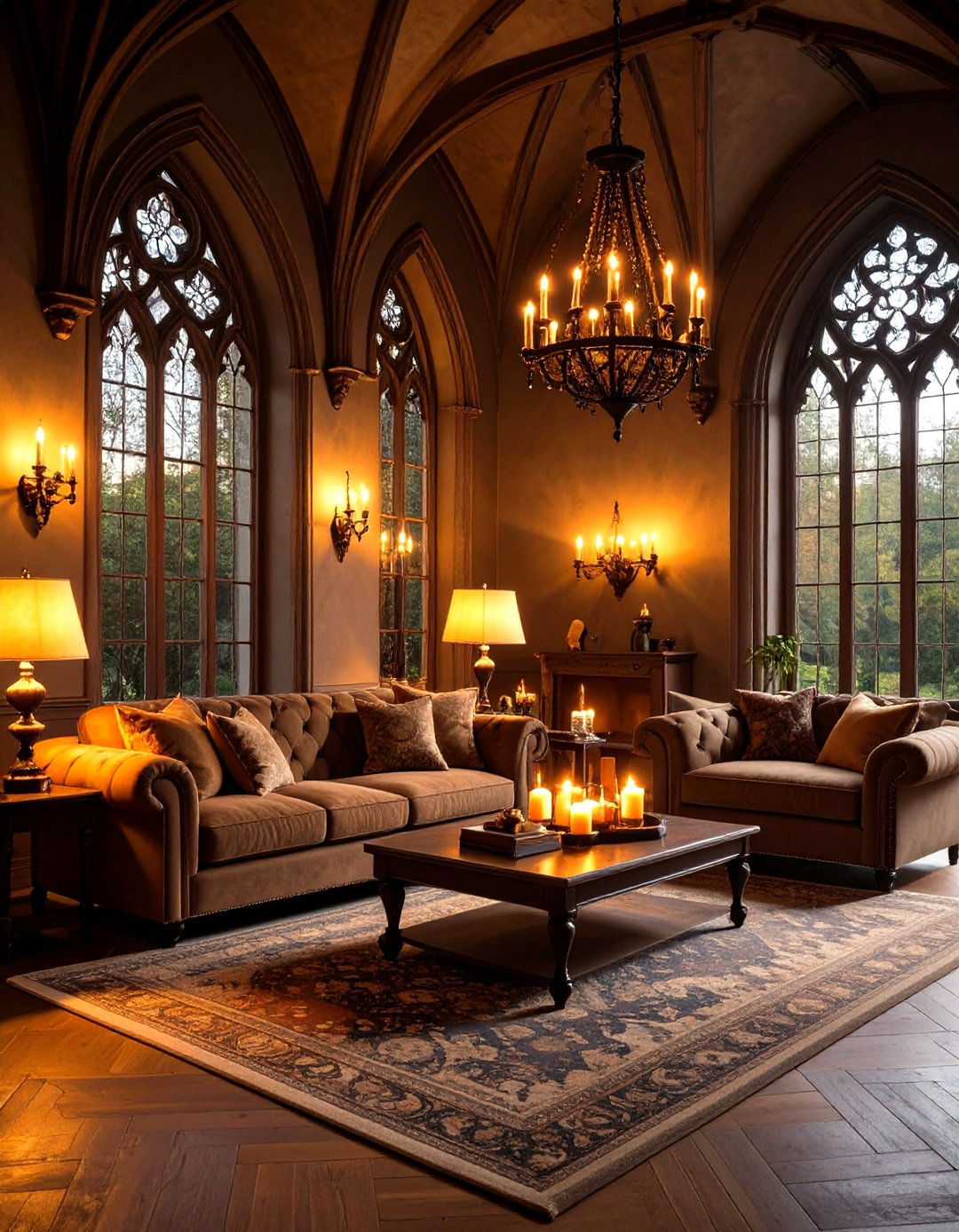
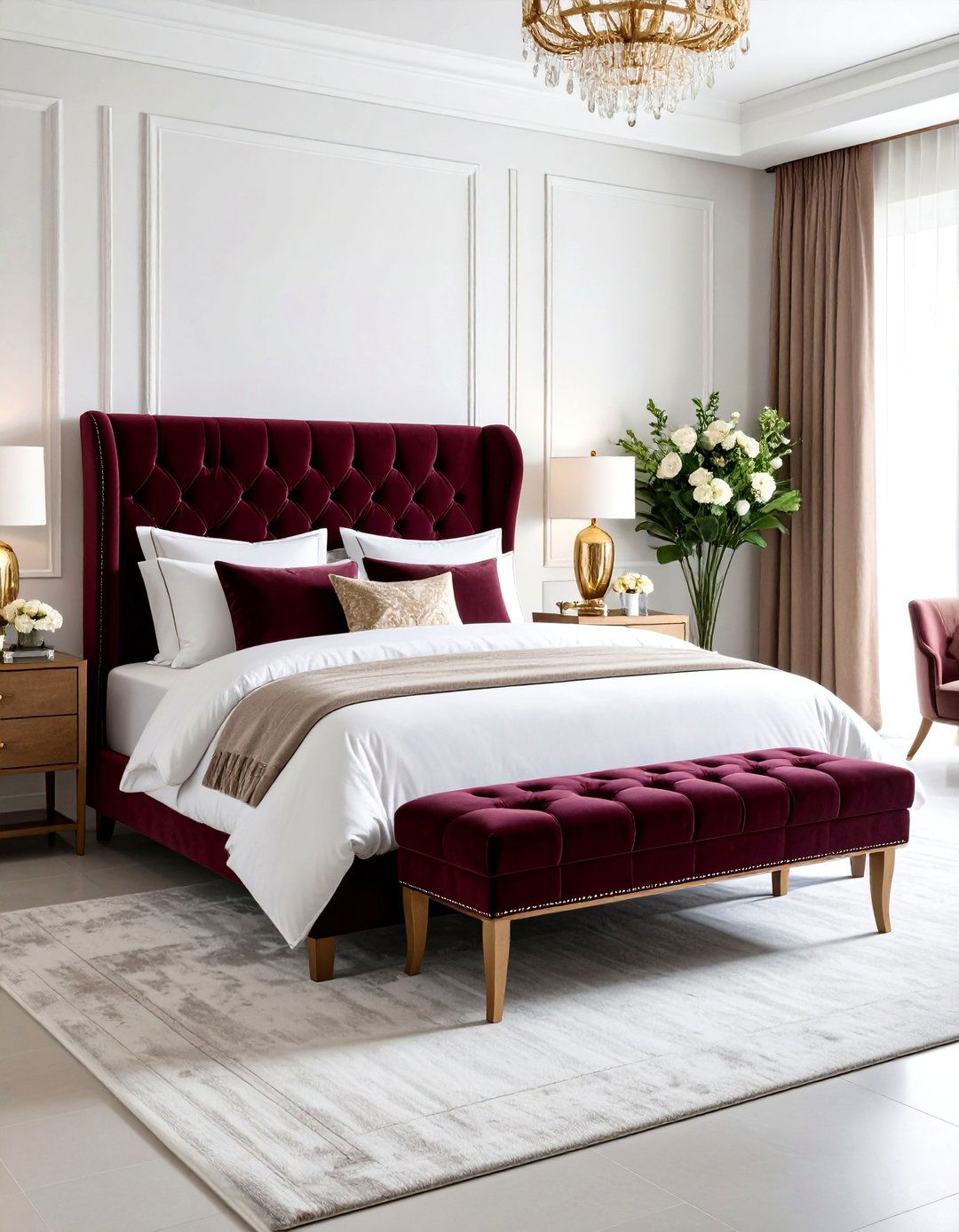
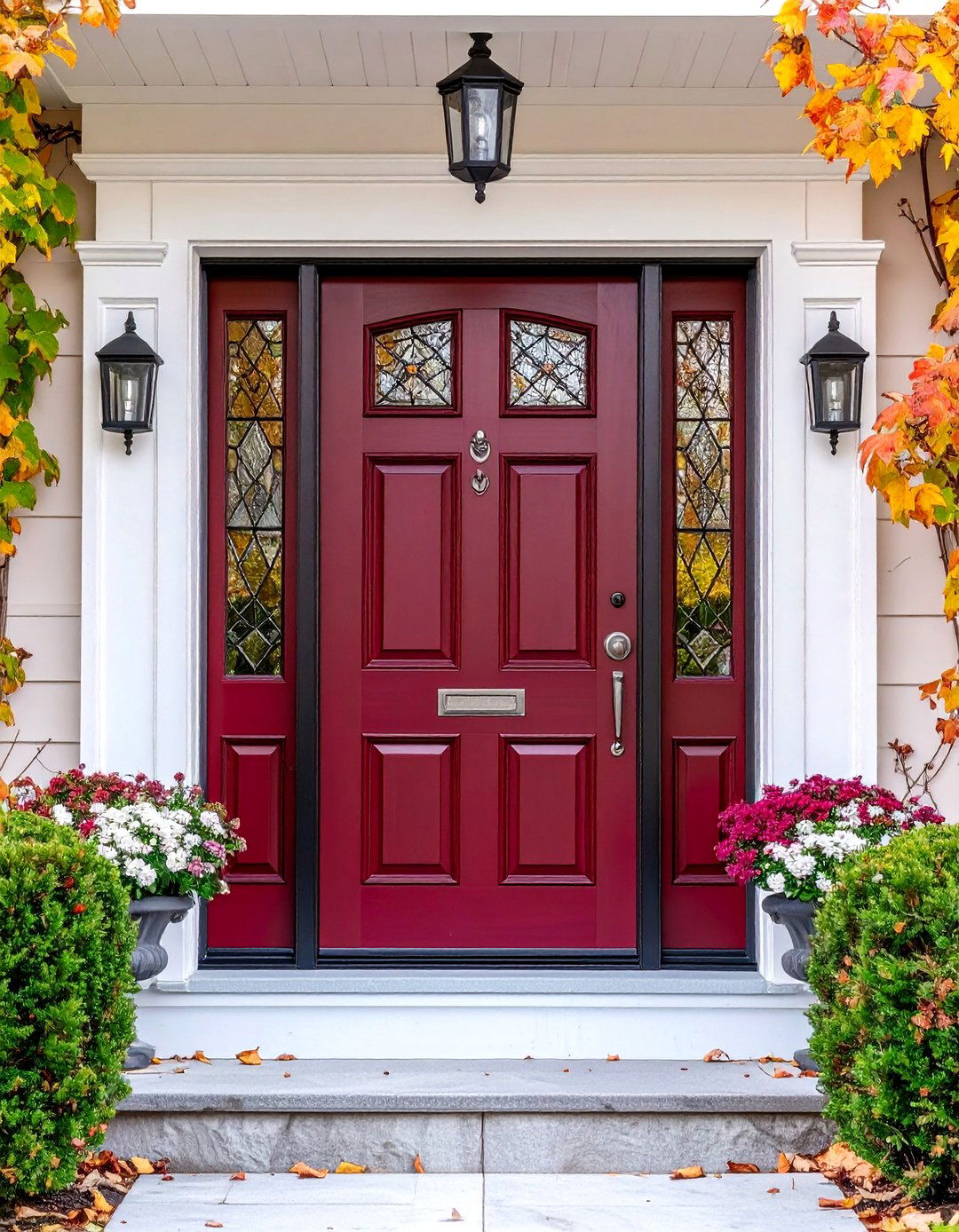
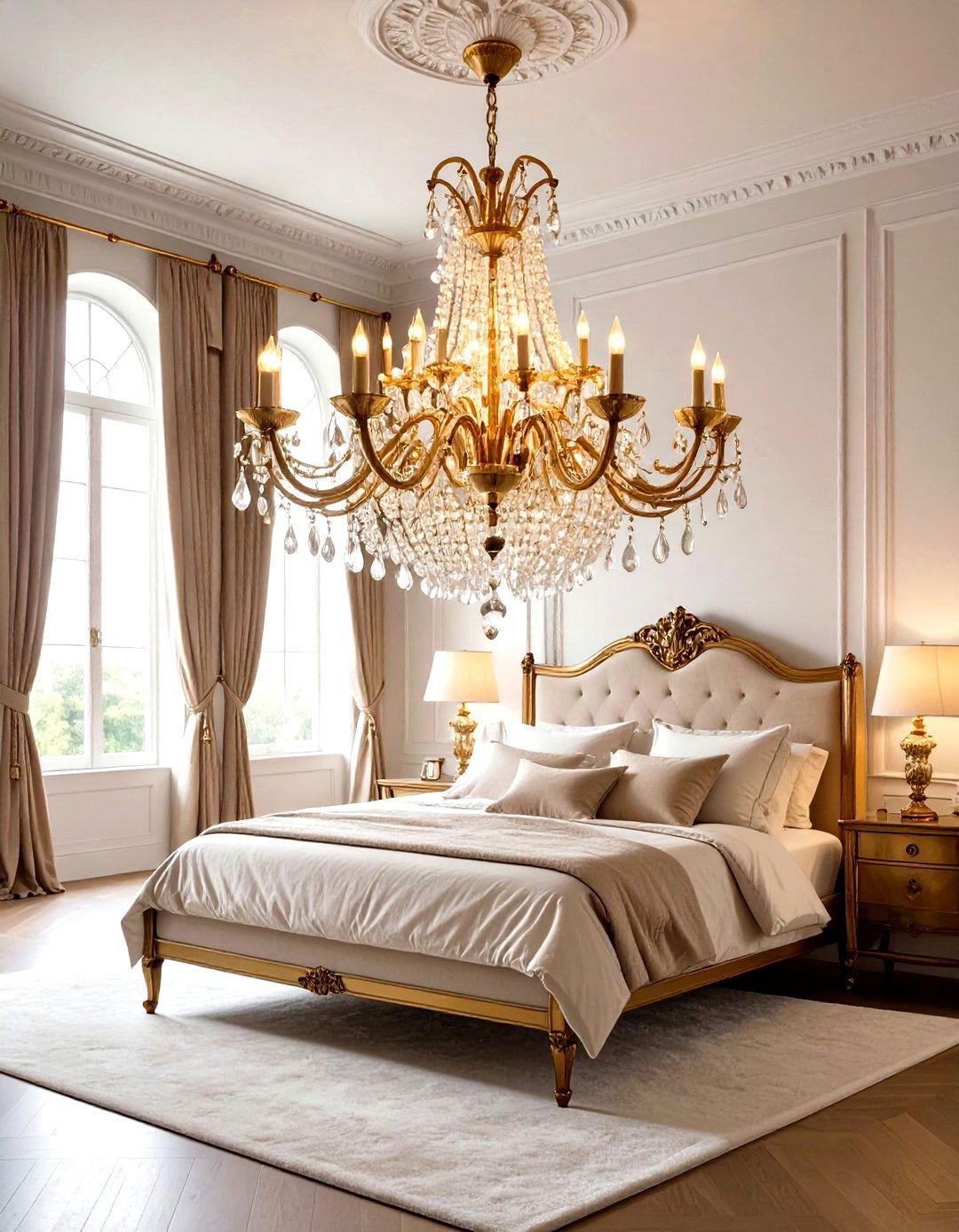
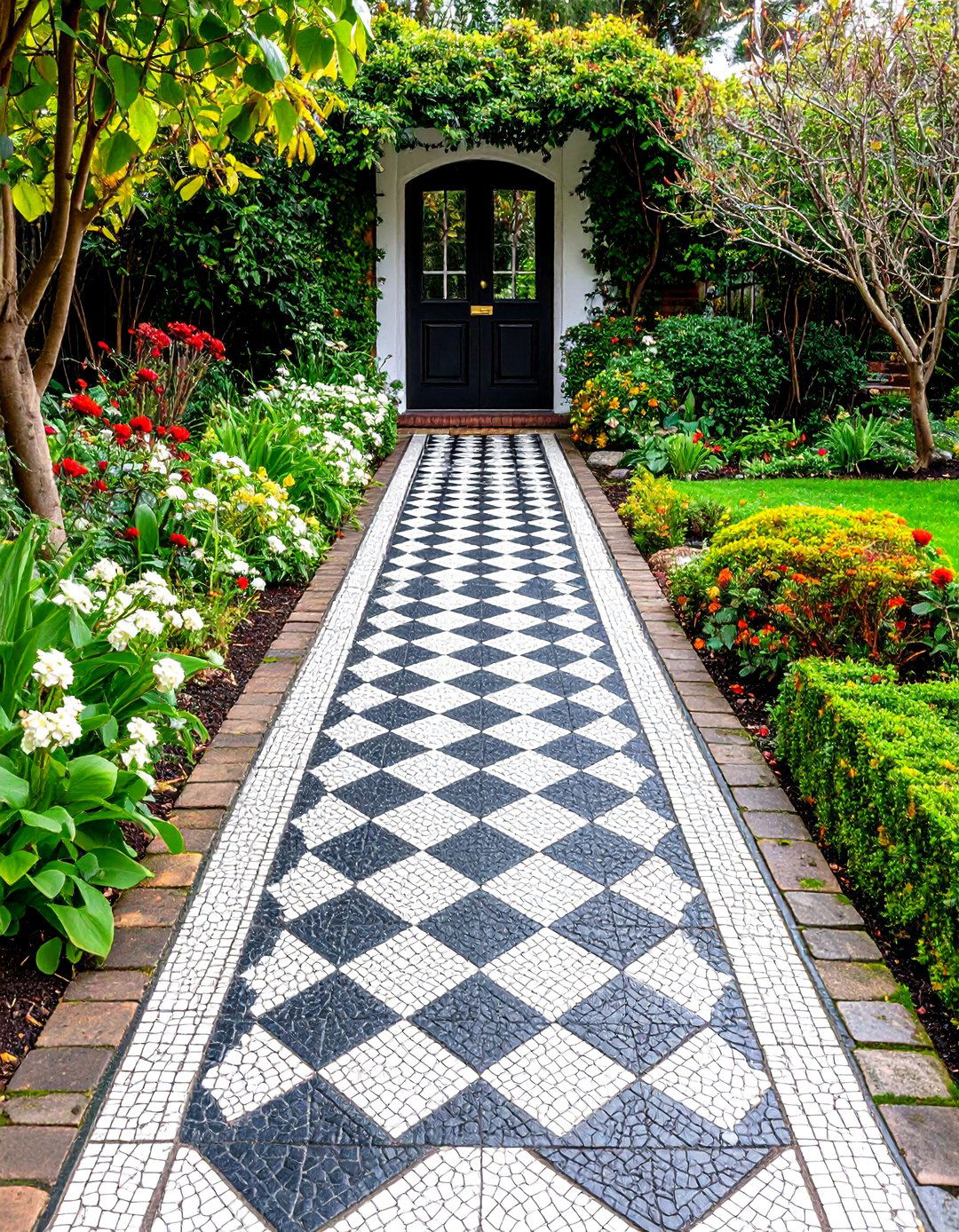

Leave a Reply